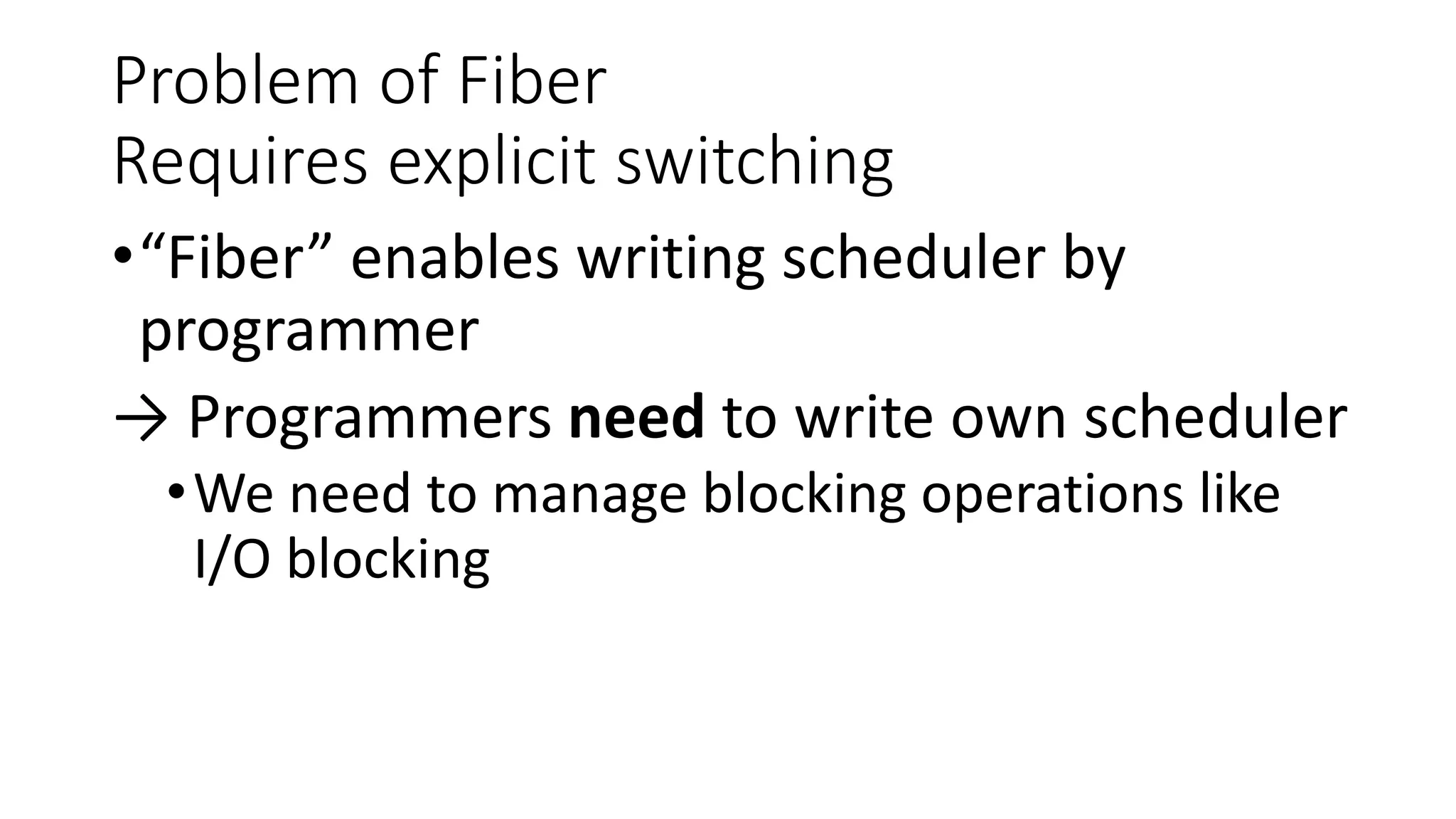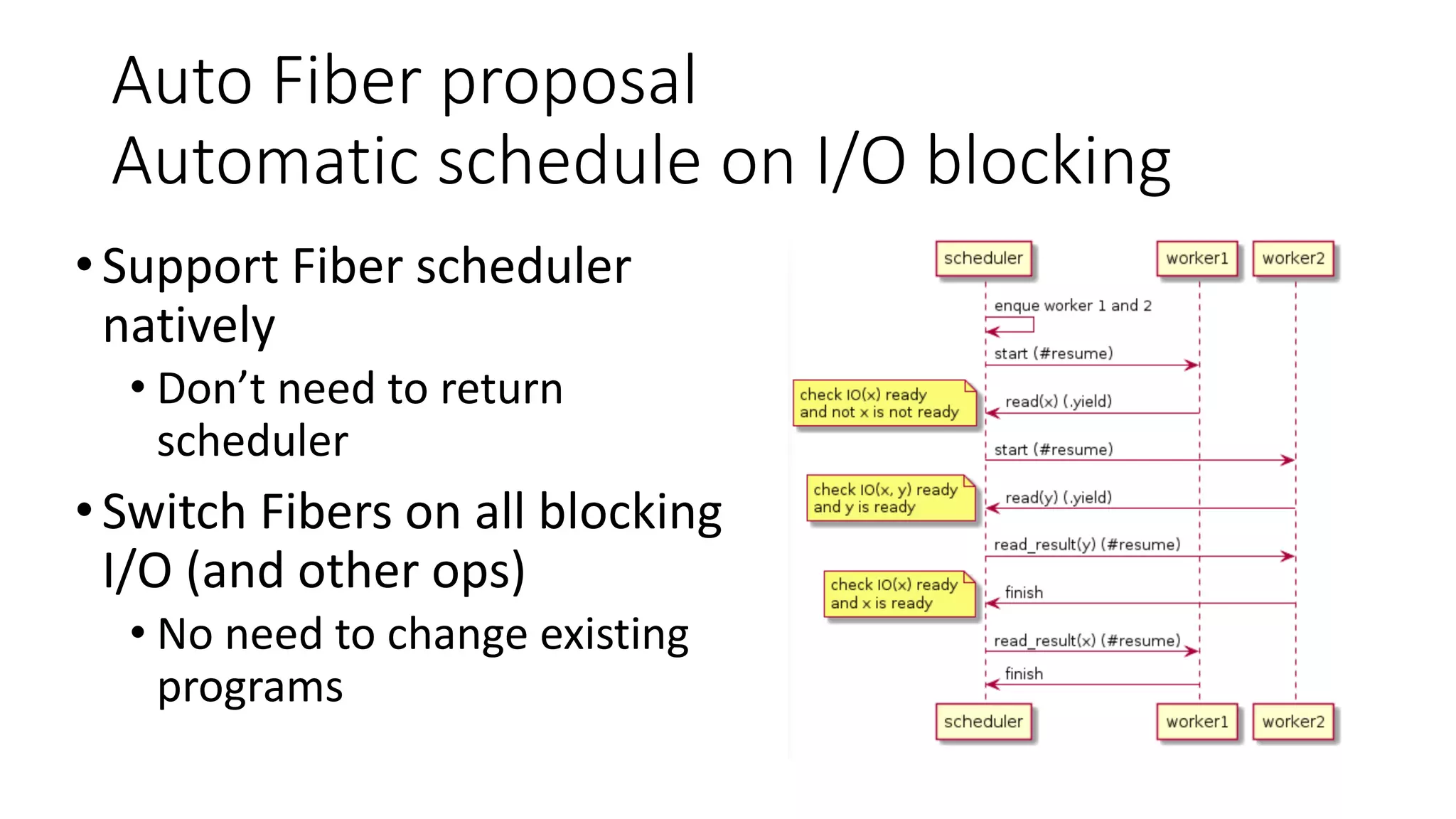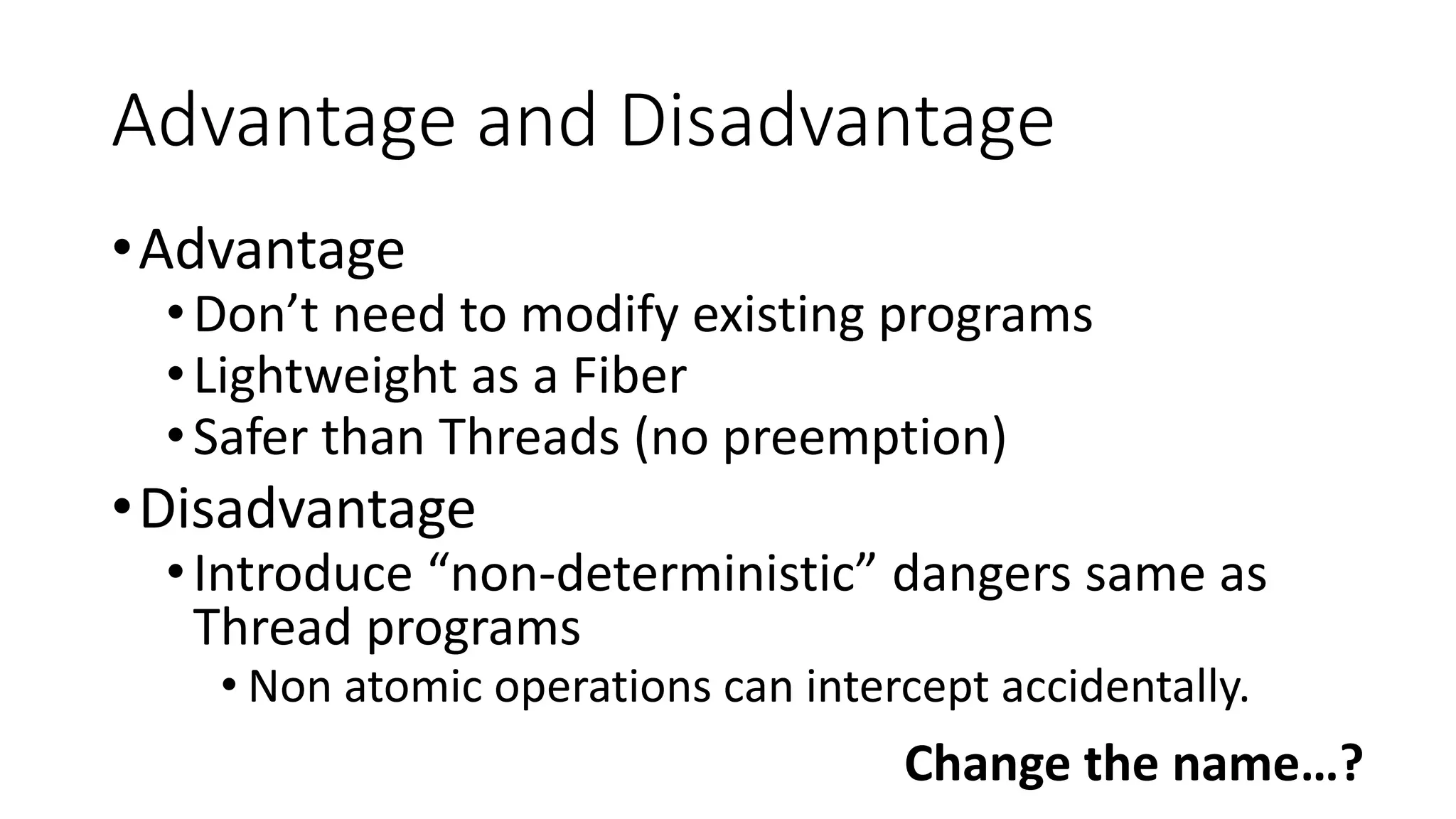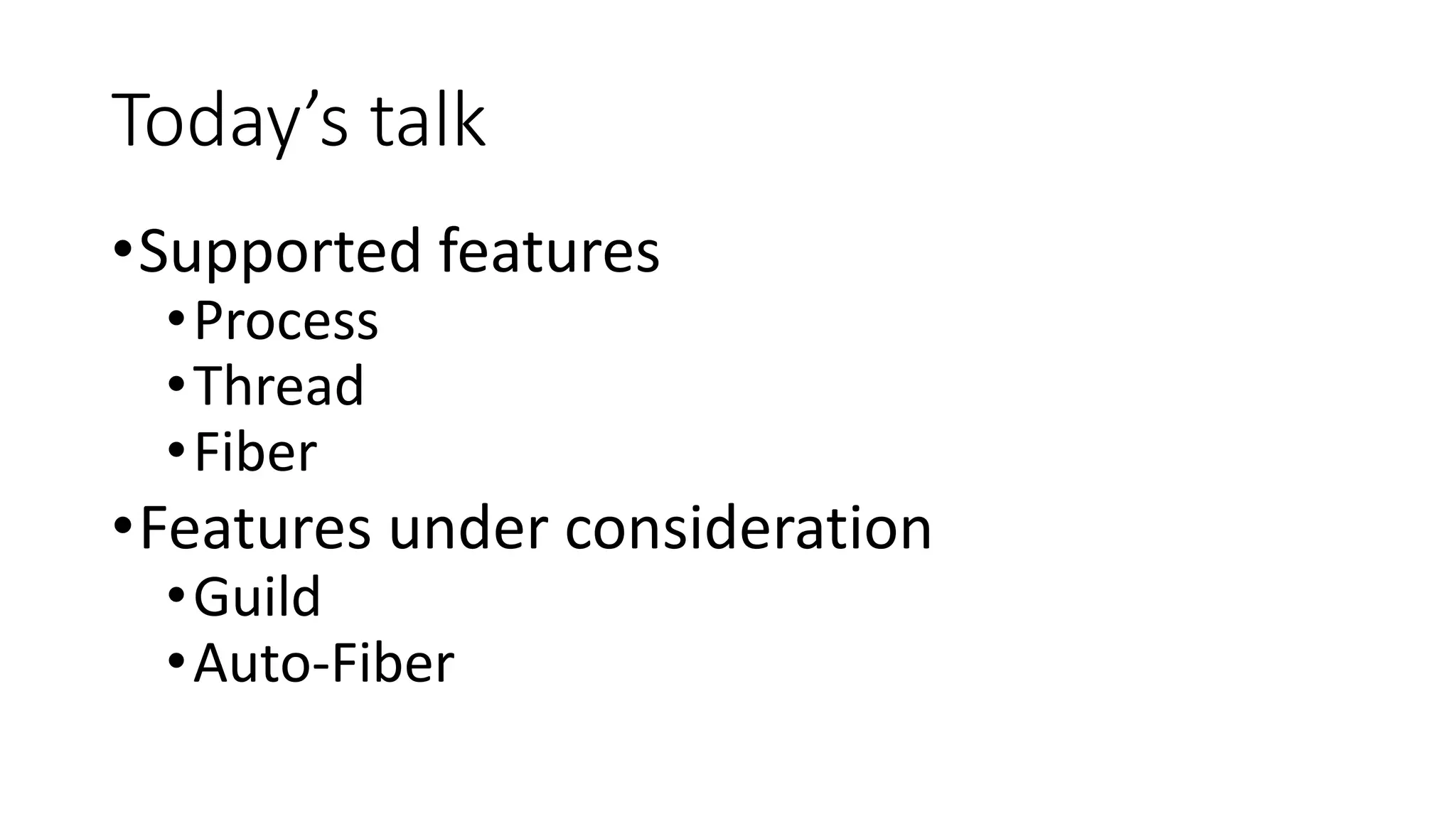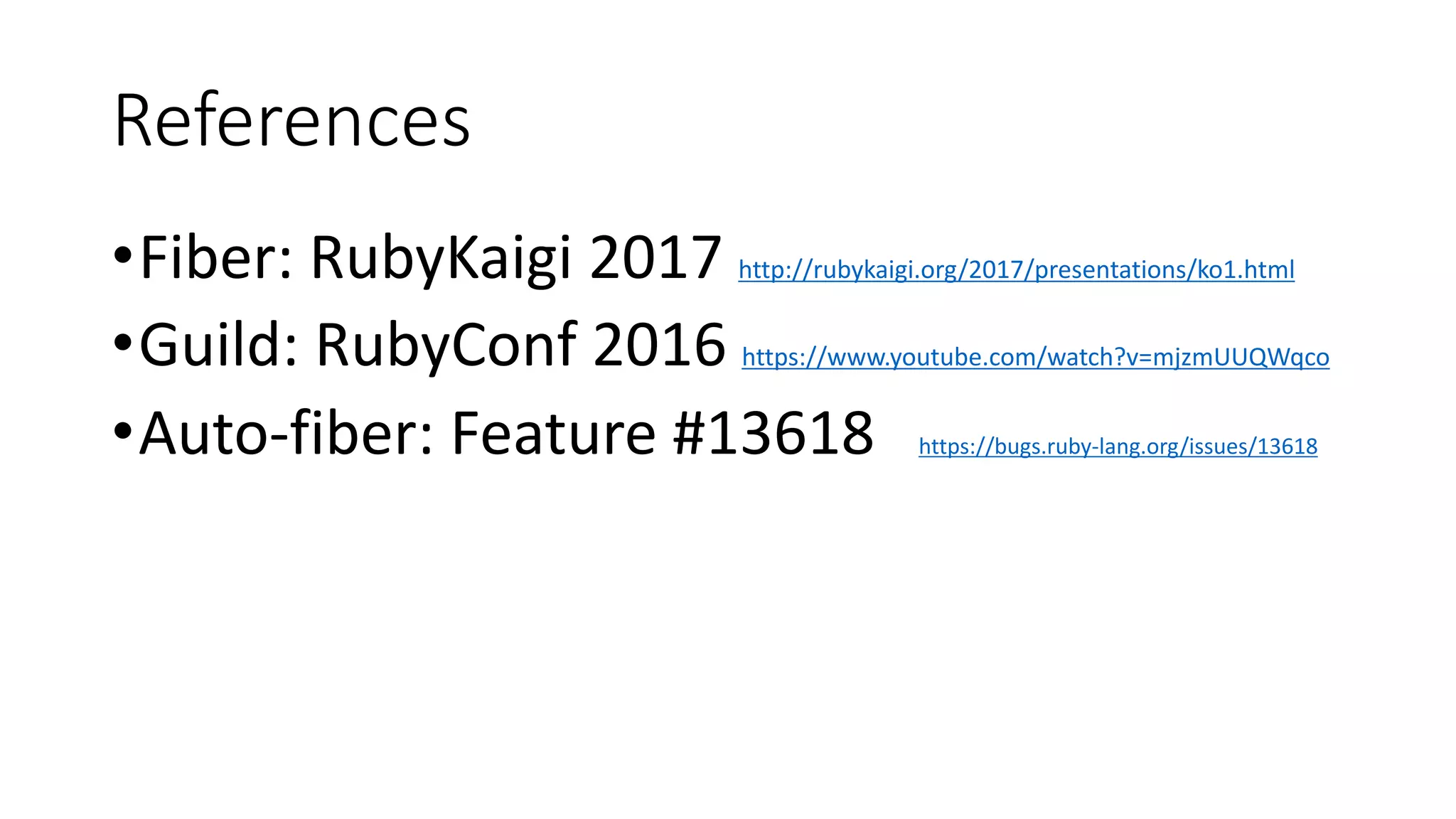Ruby's concurrency management supports processes, threads, and fibers. Guild is a proposed new abstraction for Ruby 3 that aims to allow parallel execution while prohibiting sharing of mutable objects between threads. Guilds group threads so that threads within a guild cannot run in parallel due to the Giant Guild Lock, but threads across guilds can run in parallel. Objects have membership to a single guild, and inter-guild communication uses channels that can copy or transfer membership of objects.

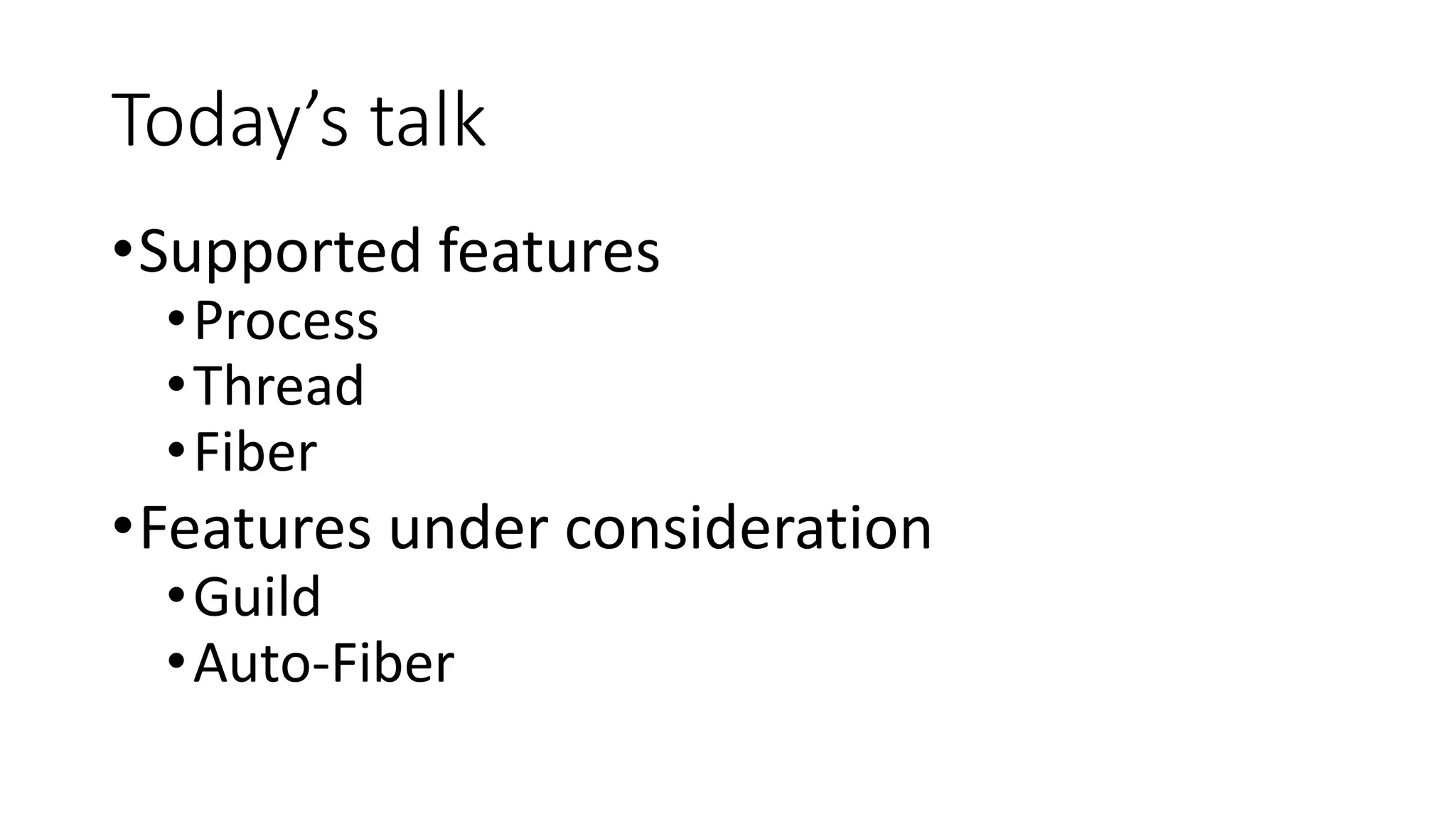


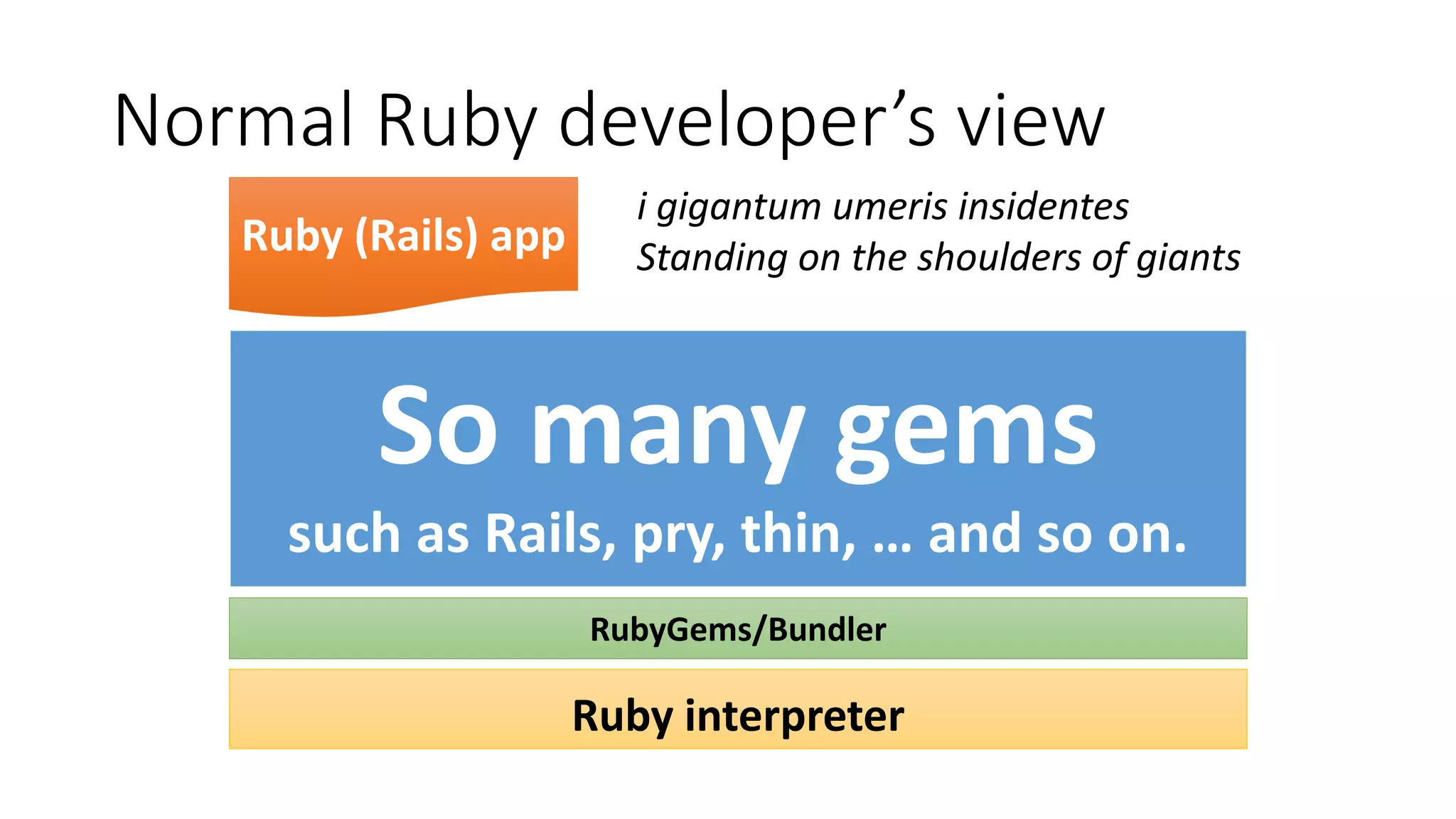
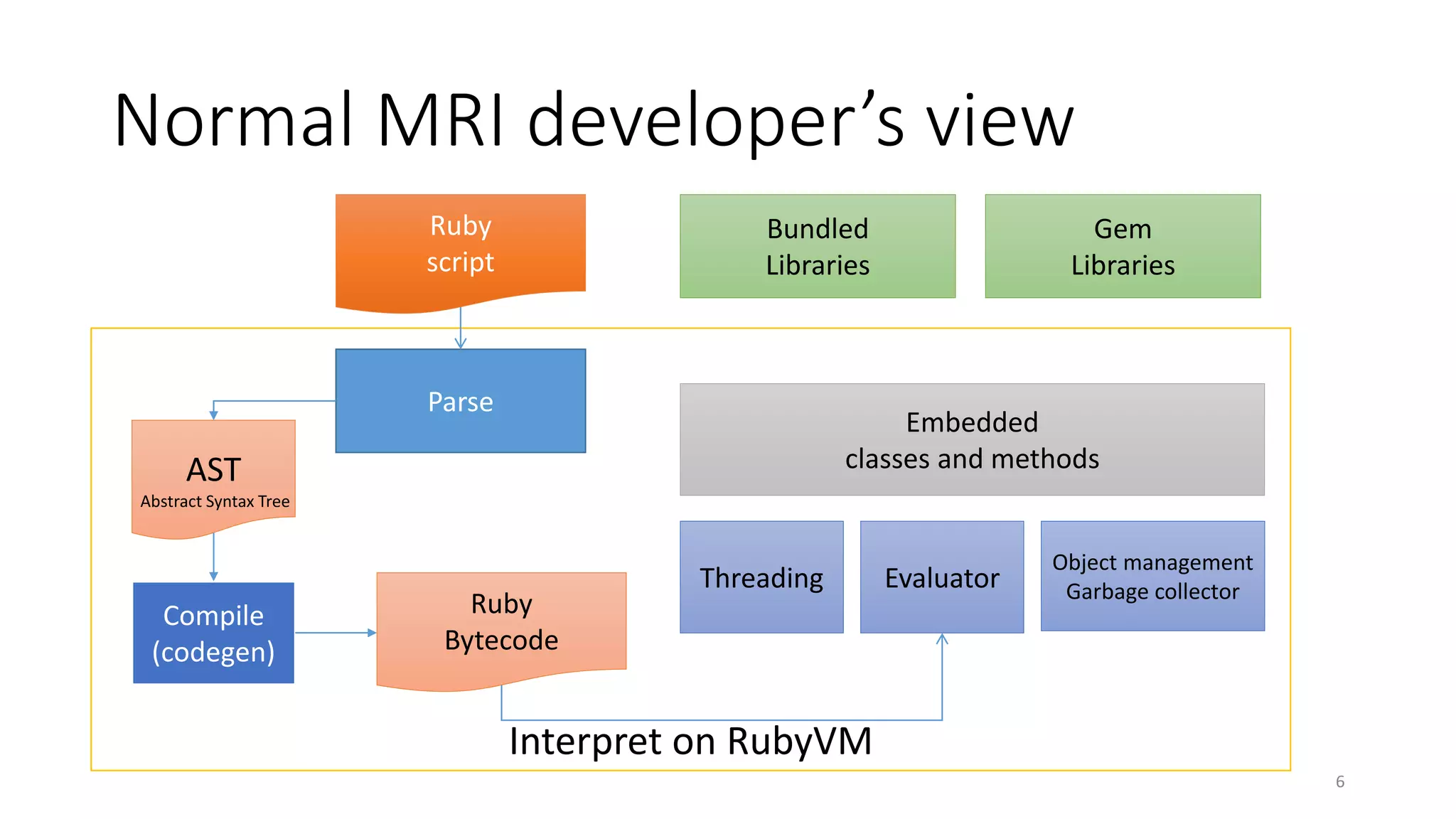
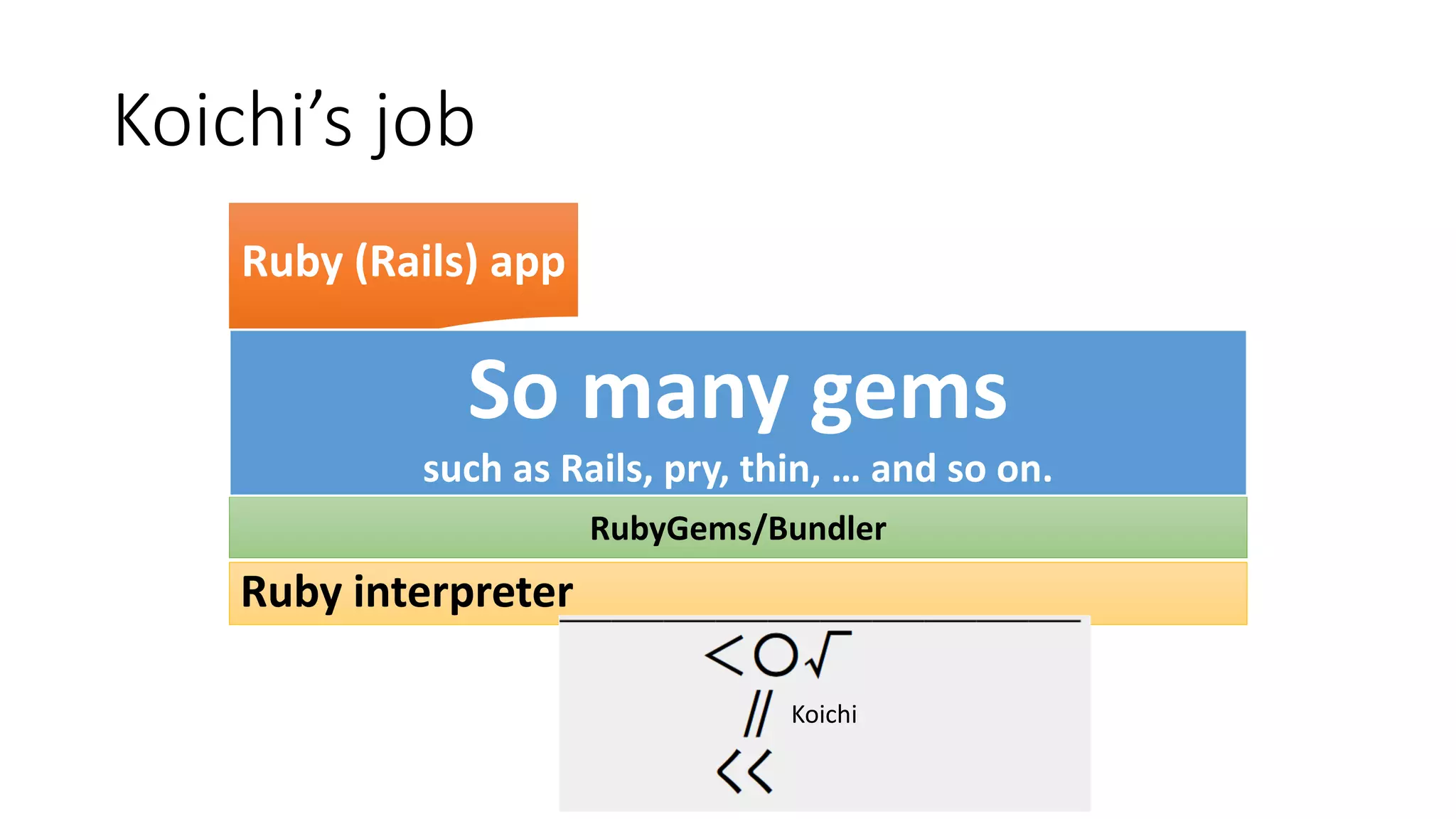
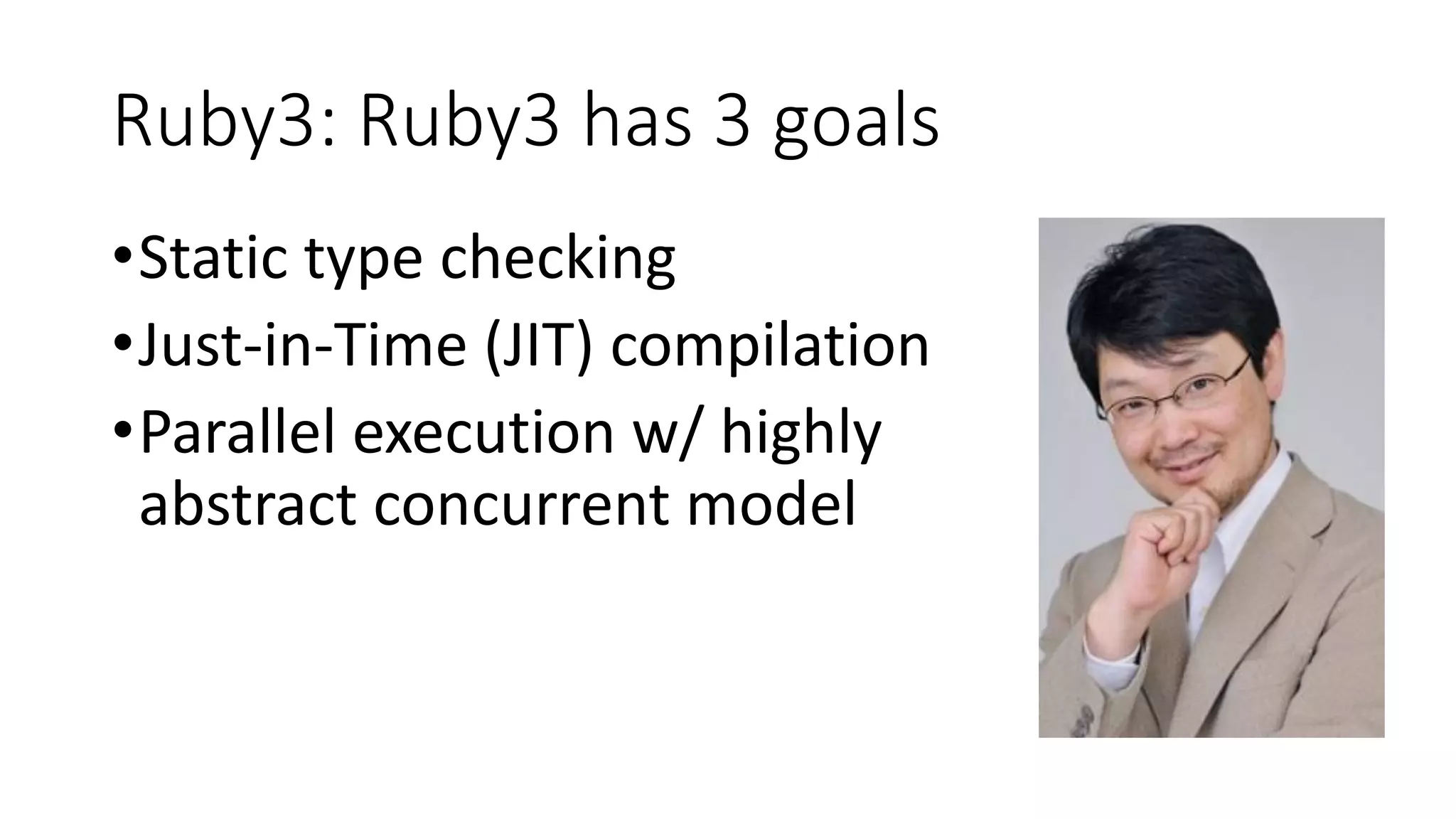
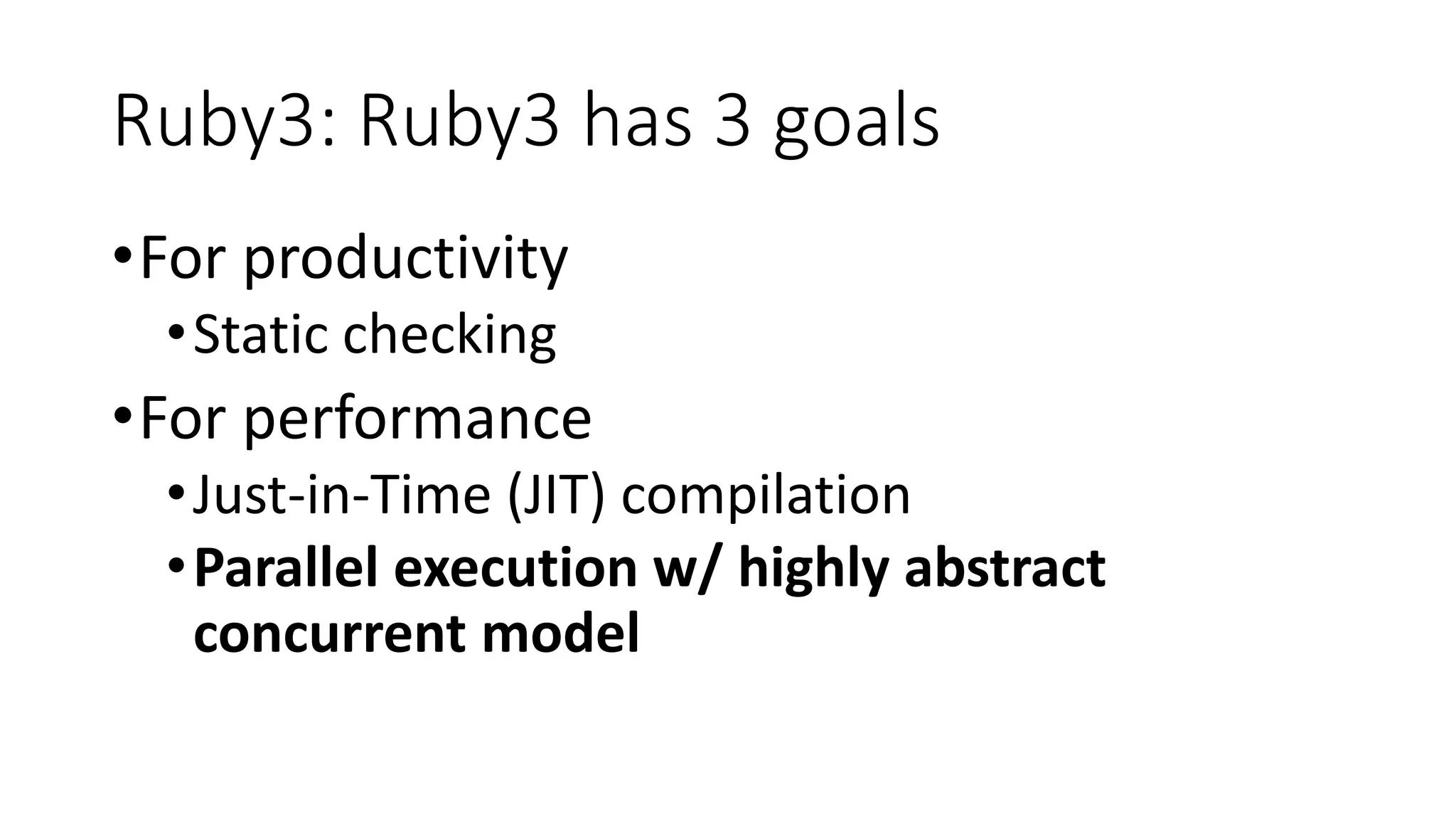
![Concurrency
“In computer science, concurrency is the decomposability
property of a program, algorithm, or problem into order-
independent or partially-ordered components or units.[1] This
means that even if the concurrent units of the program,
algorithm, or problem are executed out-of-order or in partial
order, the final outcome will remain the same. This allows for
parallel execution of the concurrent units, which can
significantly improve overall speed of the execution in multi-
processor and multi-core systems.”
https://en.wikipedia.org/wiki/Concurrency_(computer_science)](https://image.slidesharecdn.com/2017rubyconfjakarta-171226022013/75/Ruby-s-Concurrency-Management-Now-and-Future-10-2048.jpg)


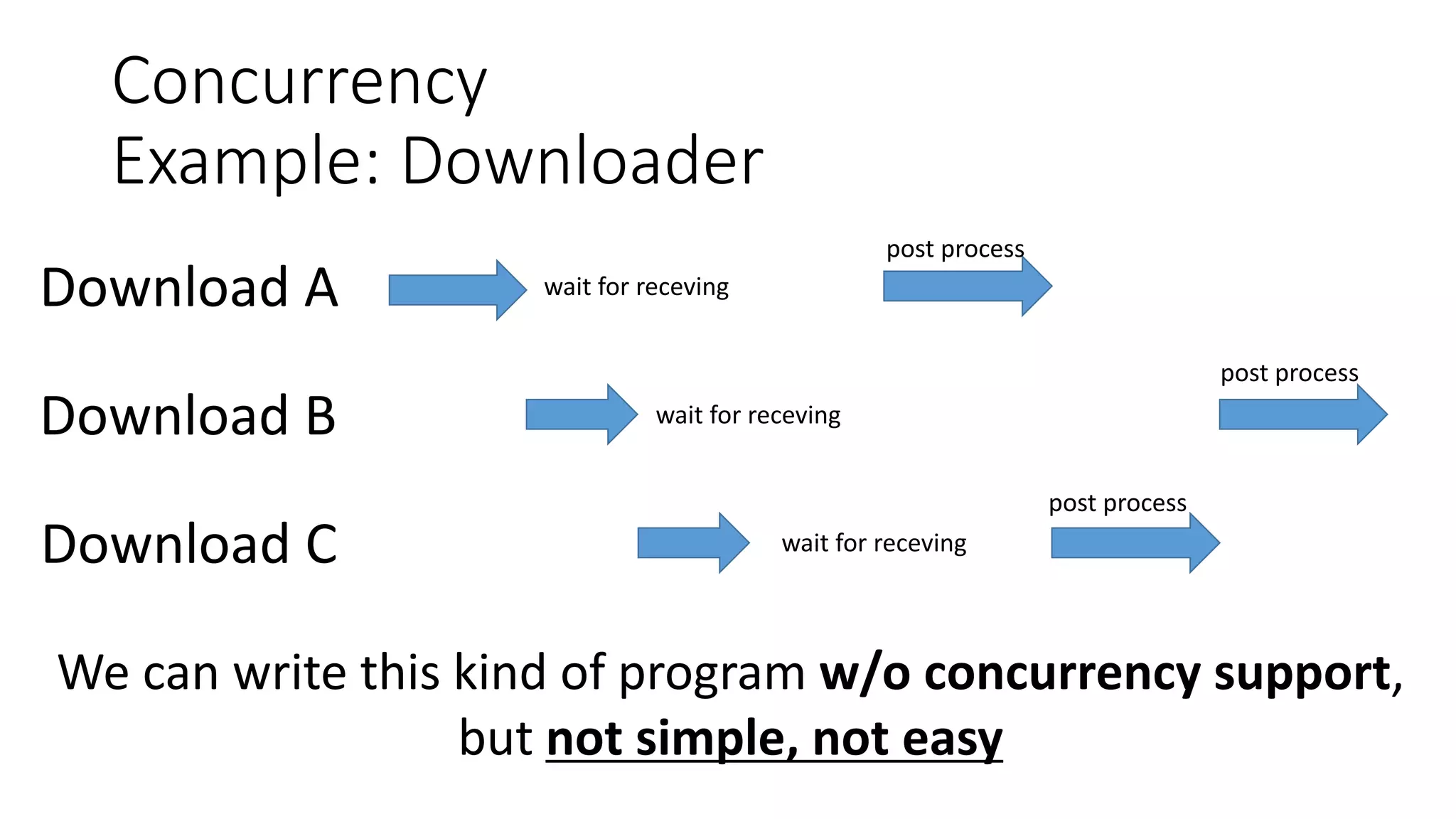

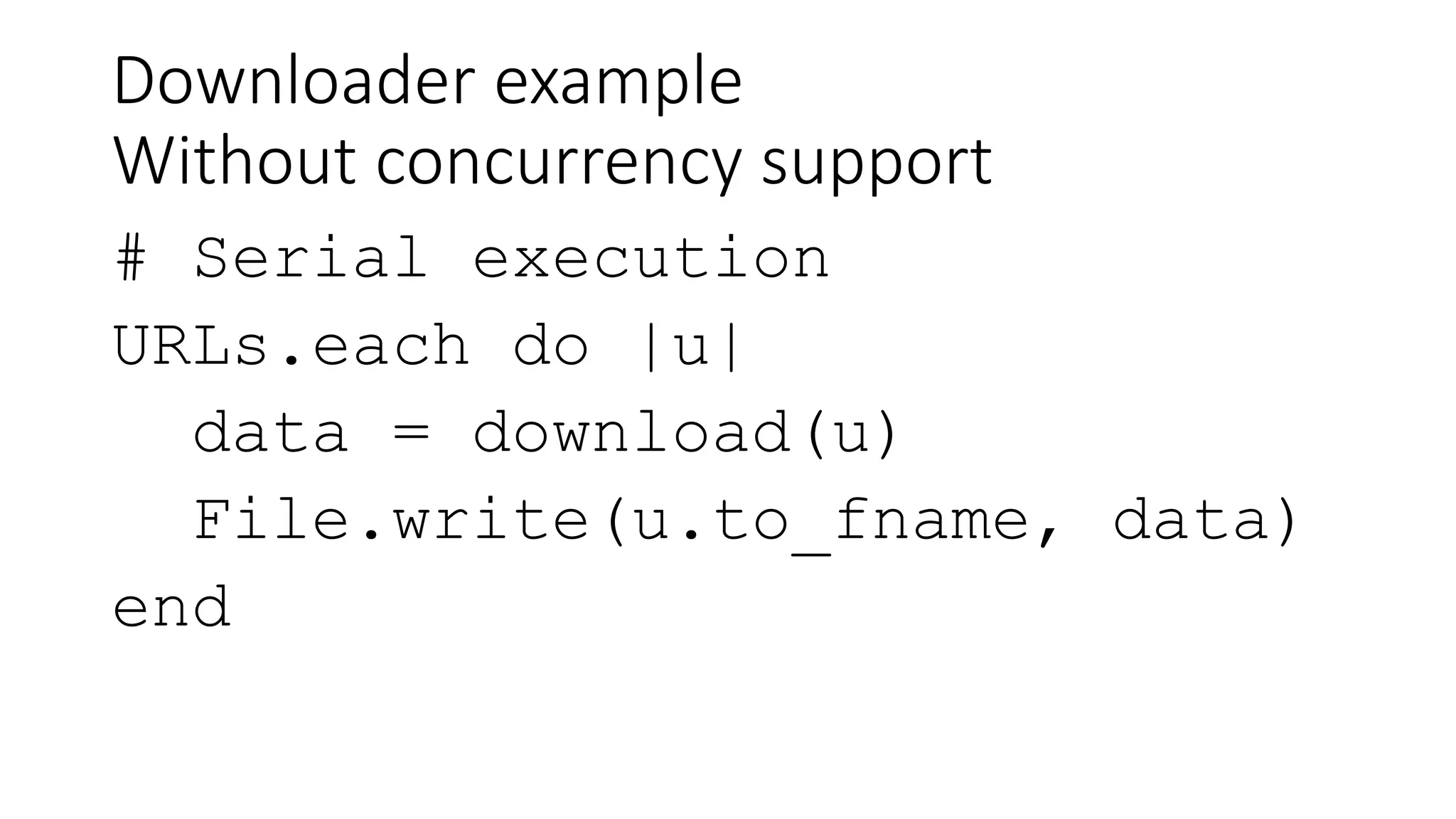
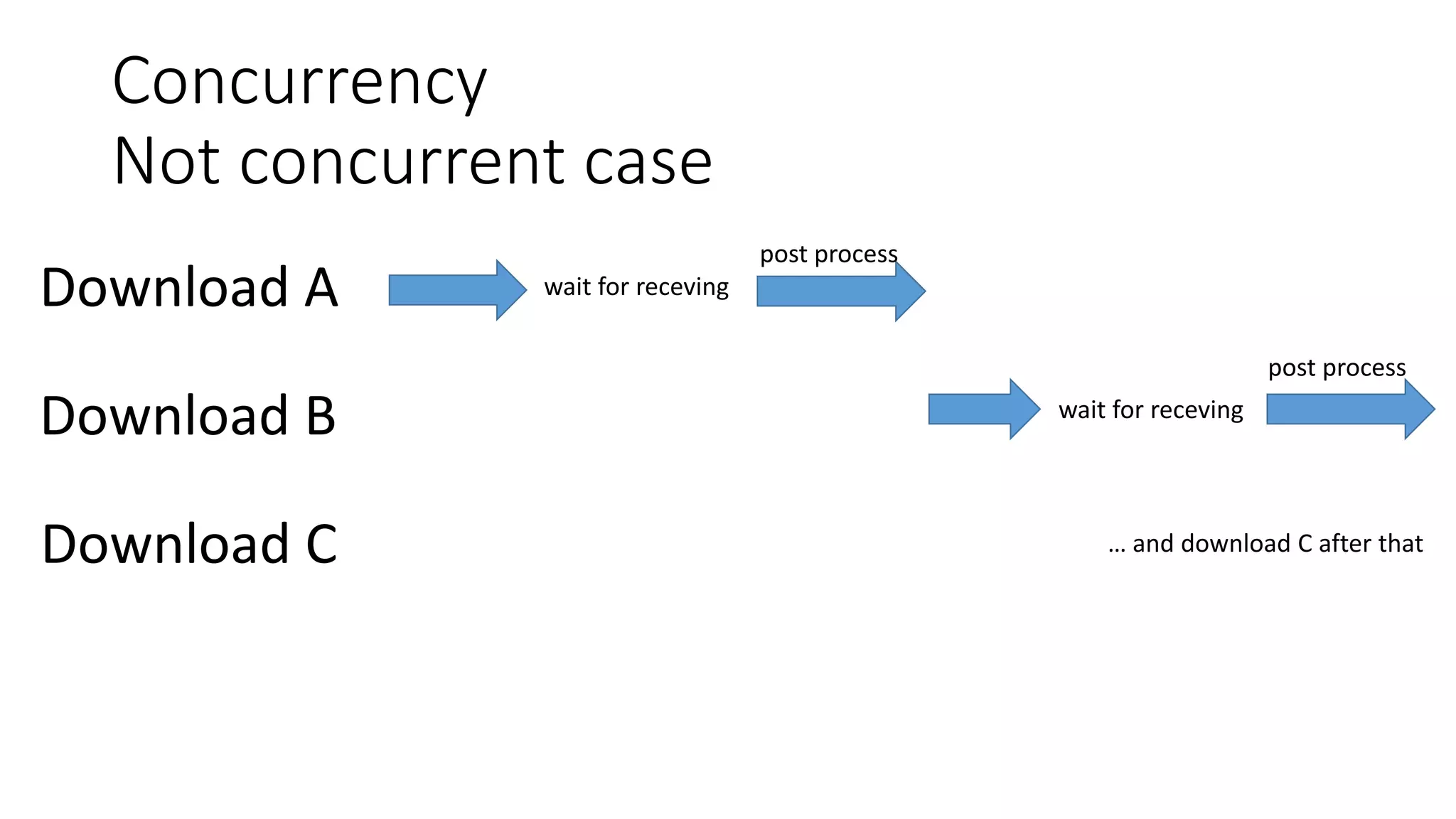


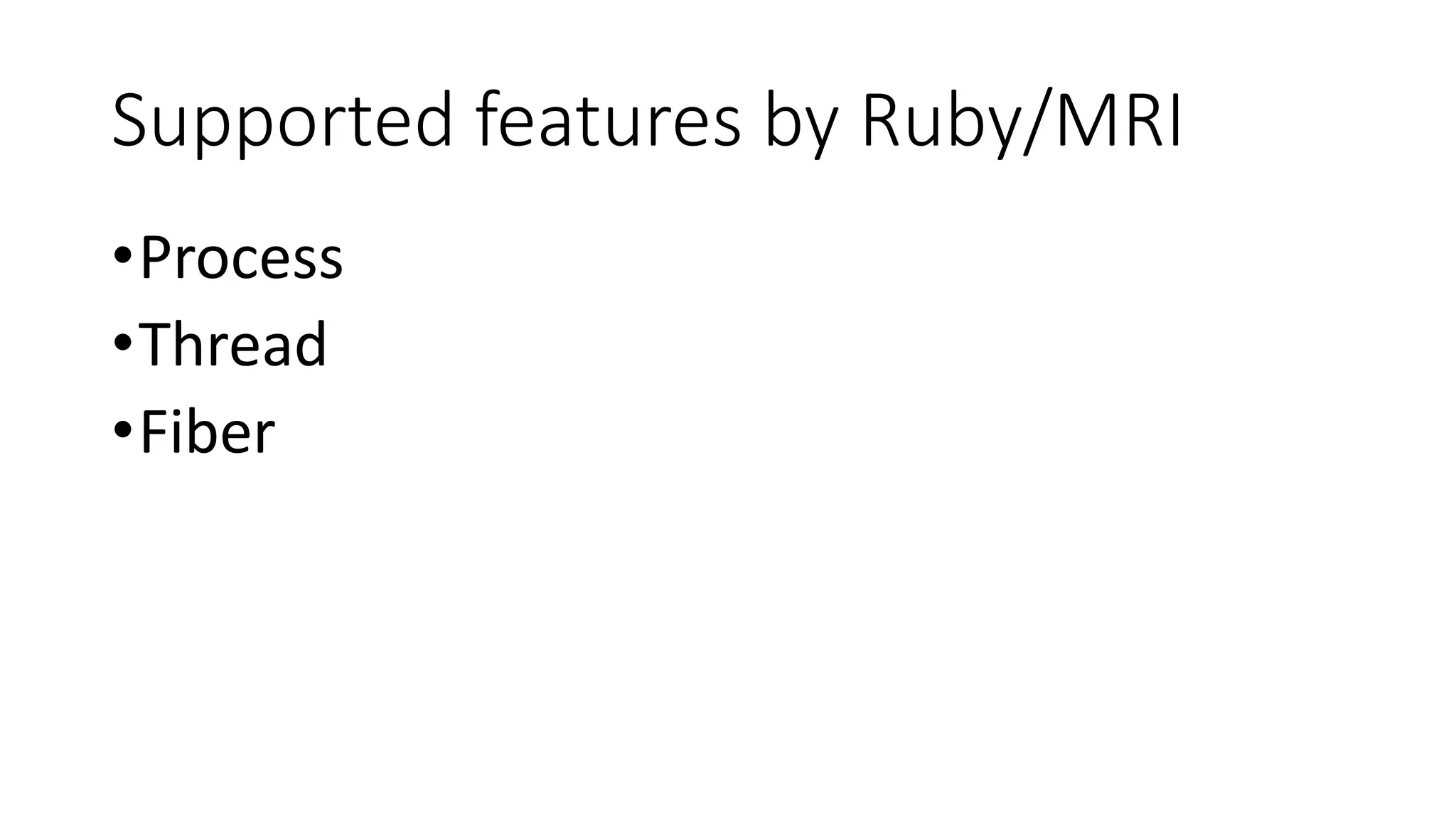

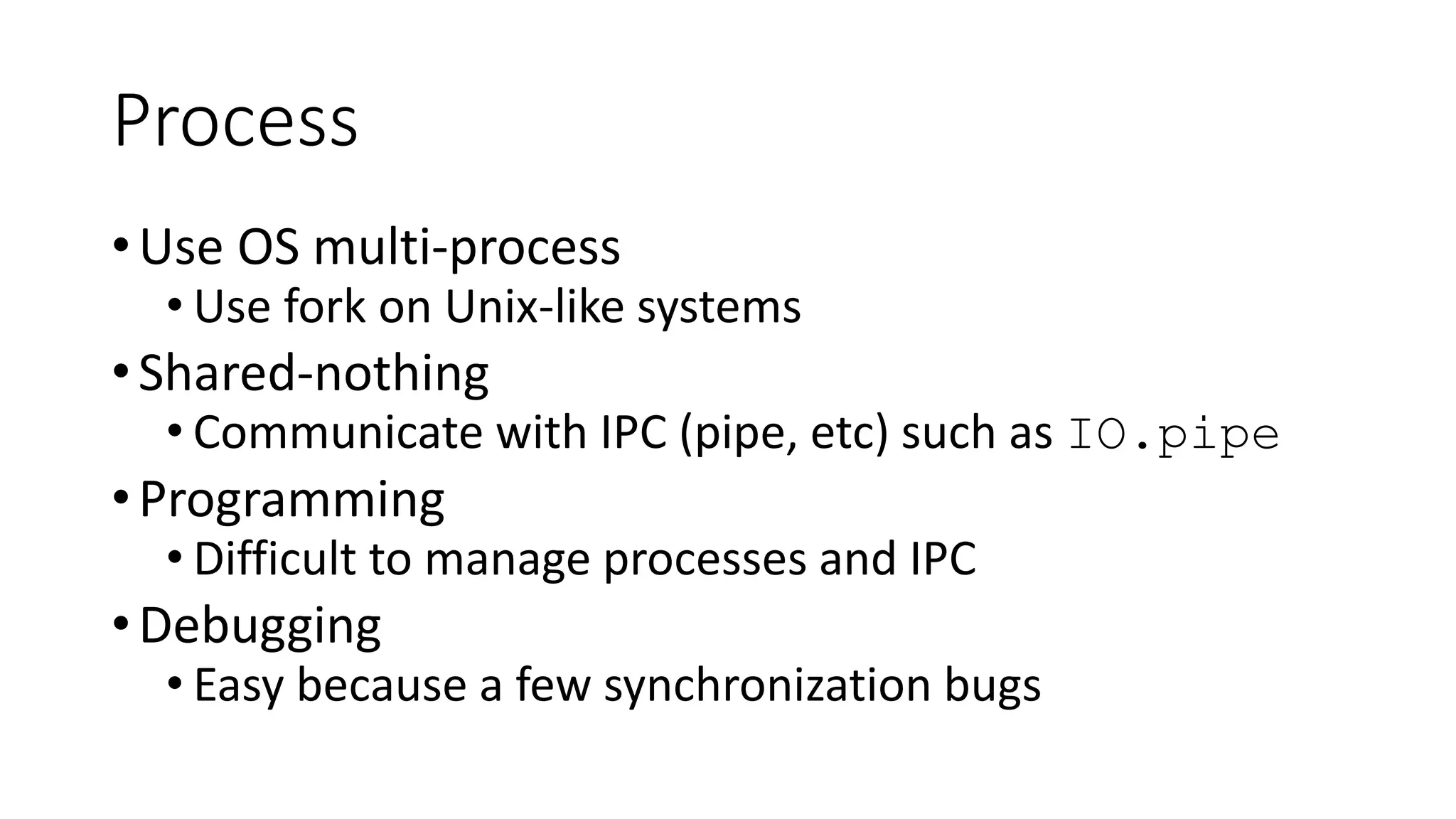
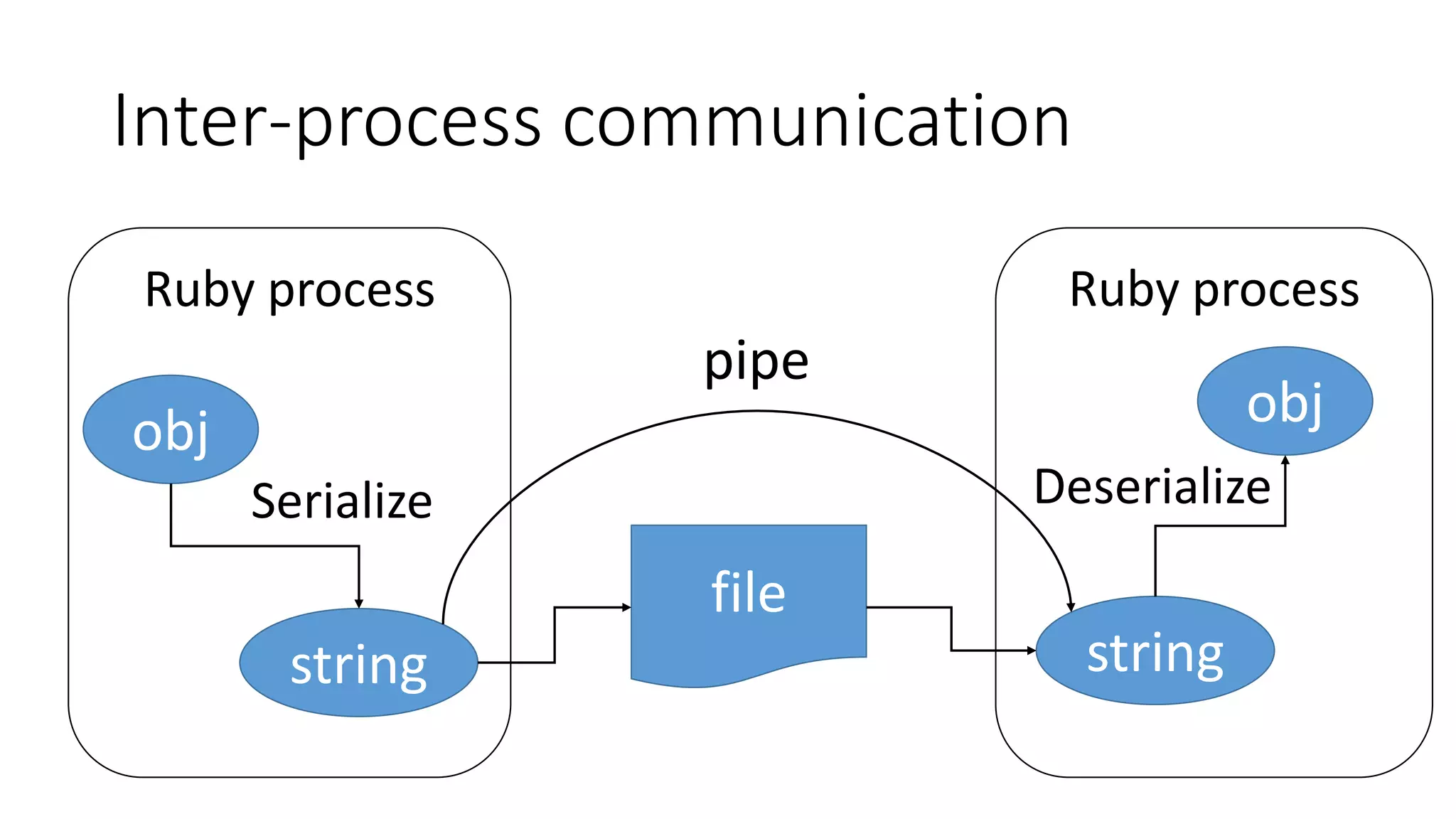
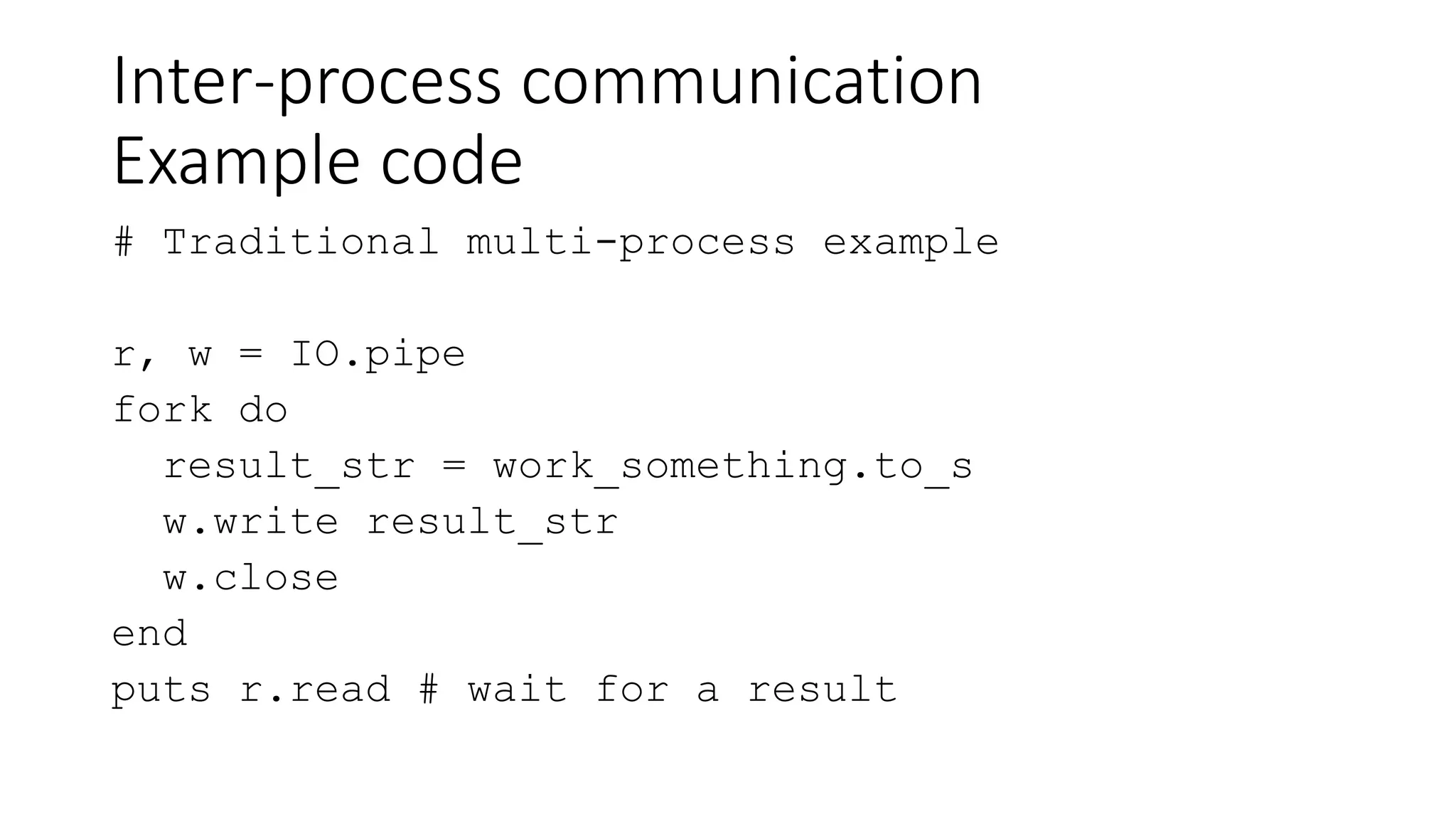
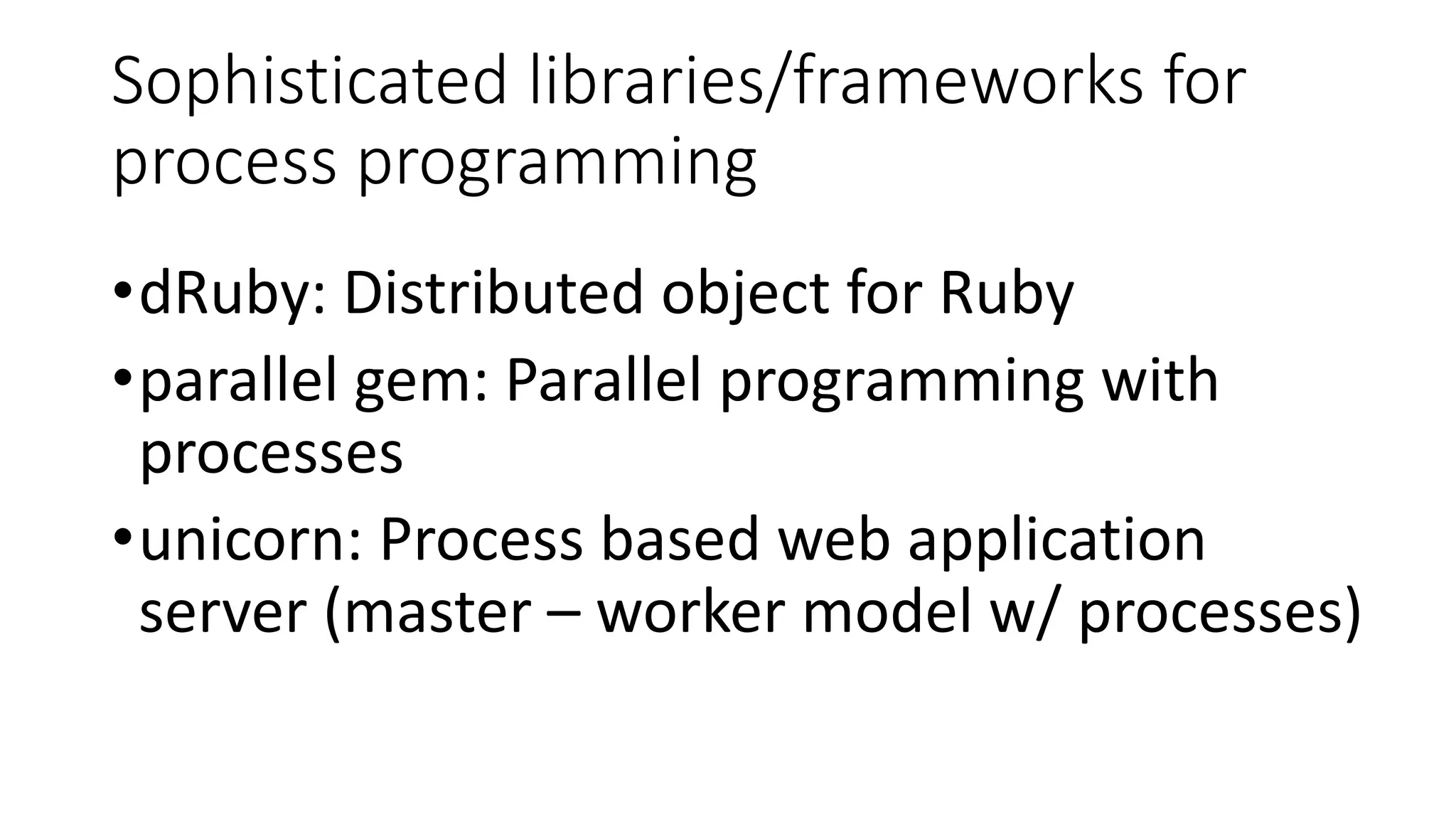

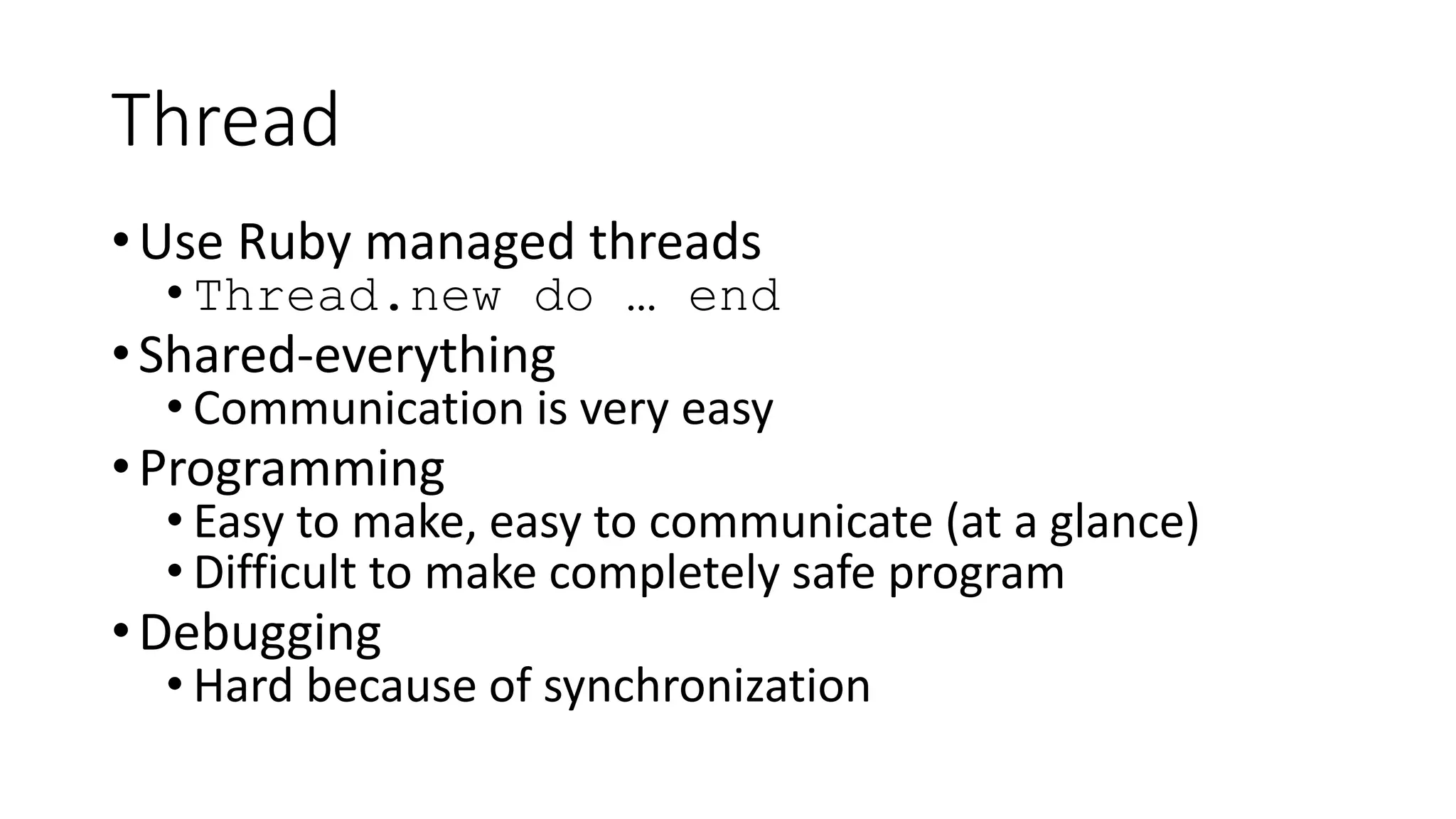
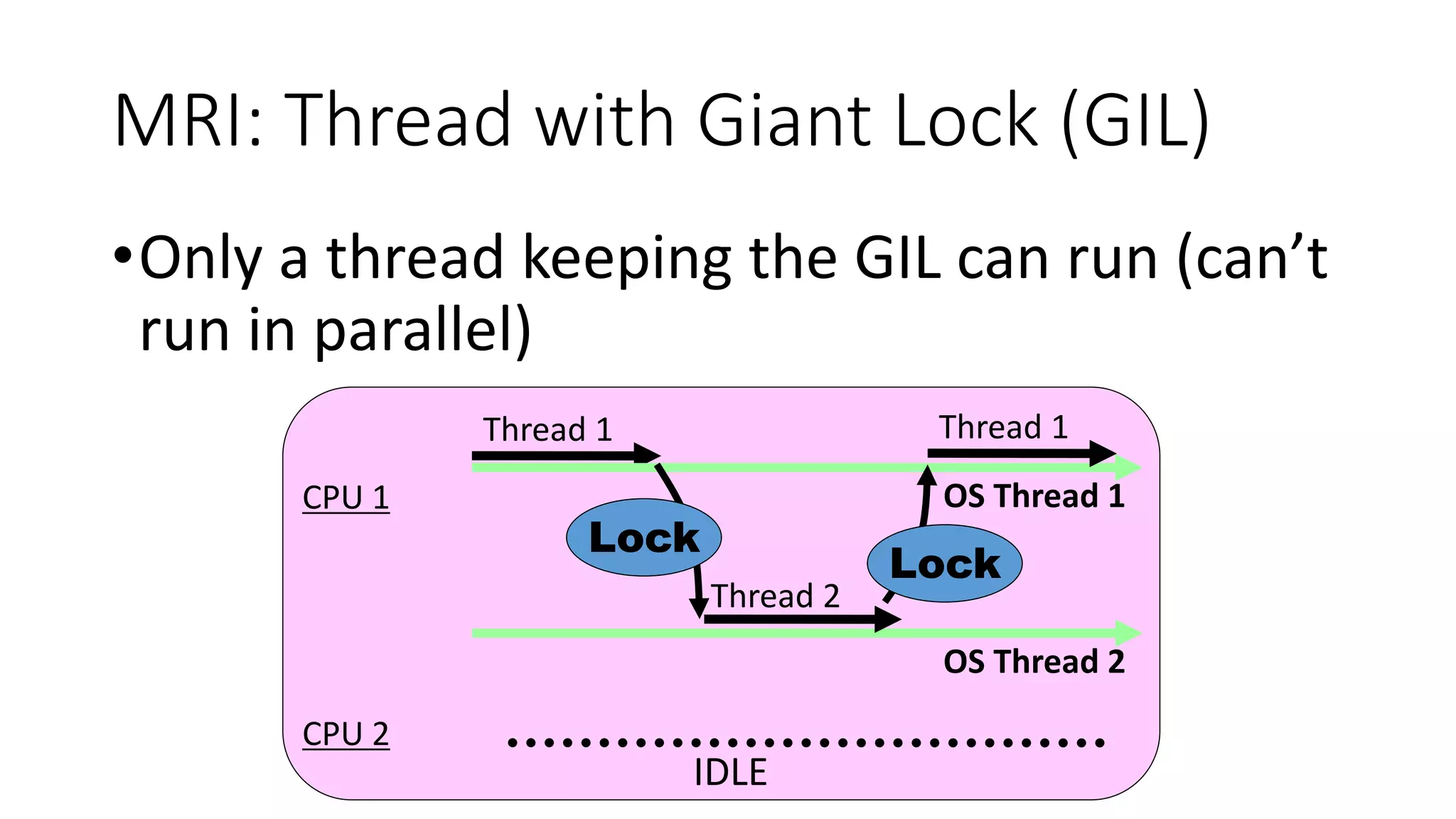
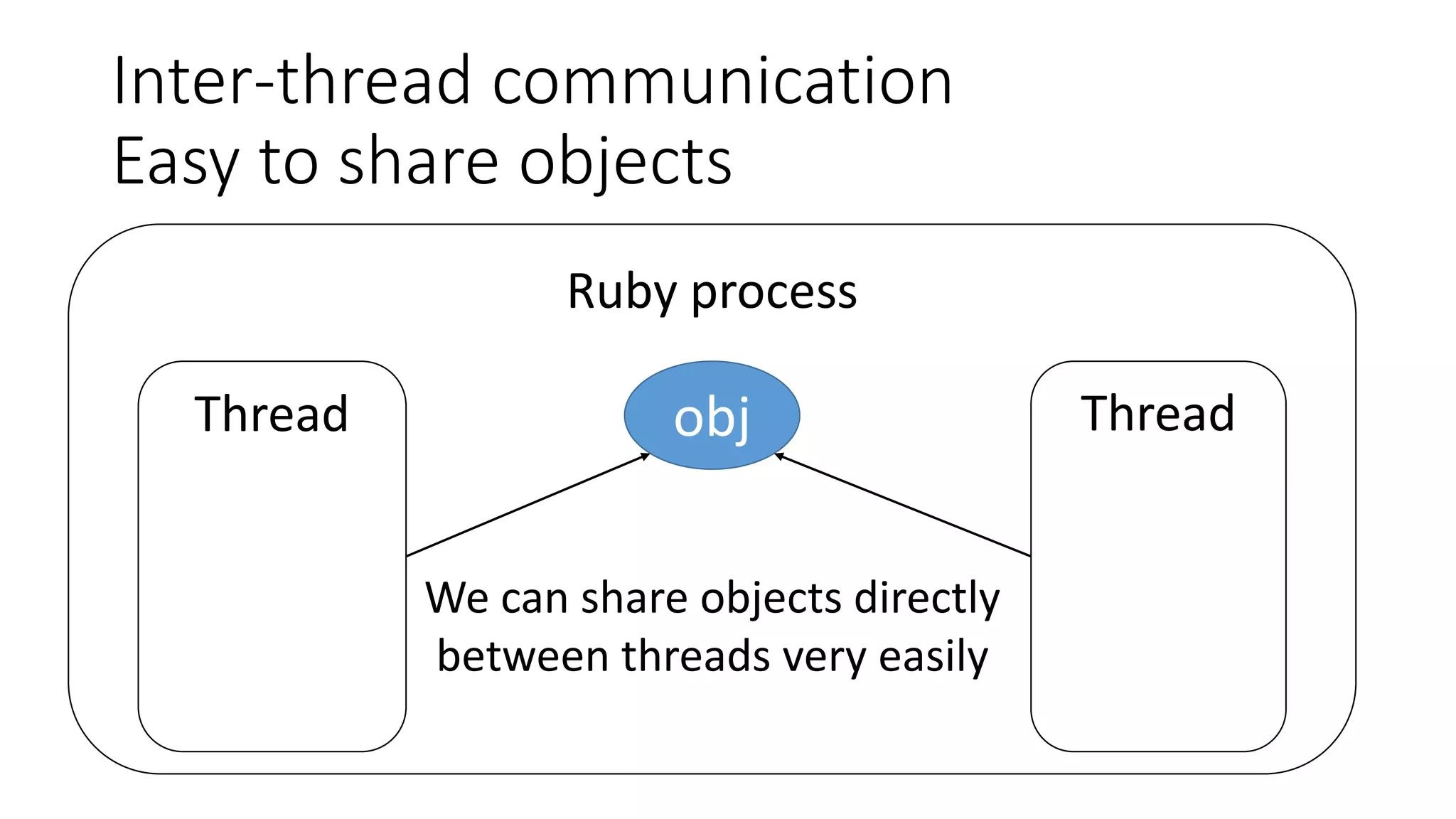
![Inter-thread communication
v = Object.new
$g = Object.new
Thread.new do
p [v, $g]
end
p [v, $g]](https://image.slidesharecdn.com/2017rubyconfjakarta-171226022013/75/Ruby-s-Concurrency-Management-Now-and-Future-29-2048.jpg)

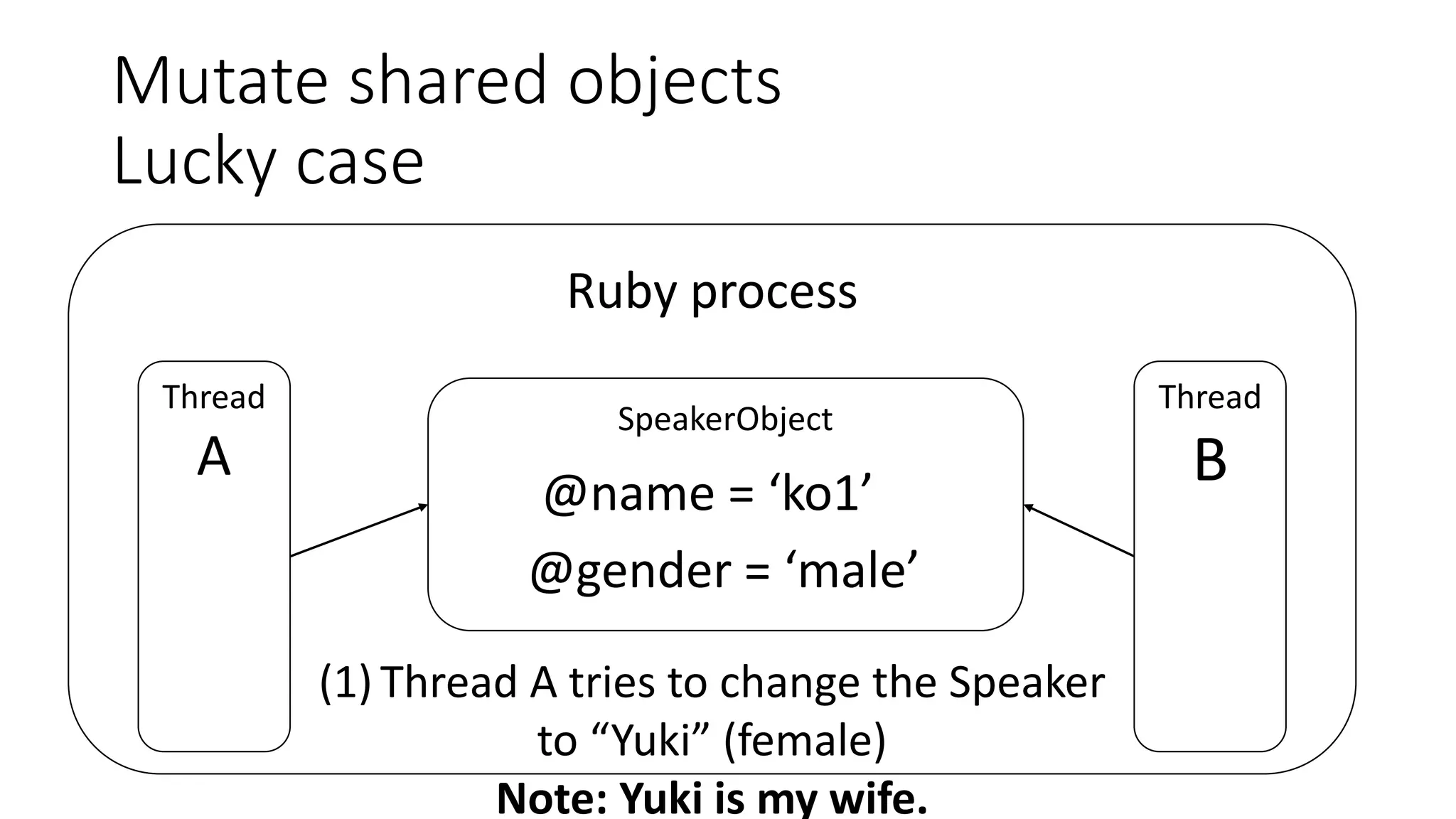
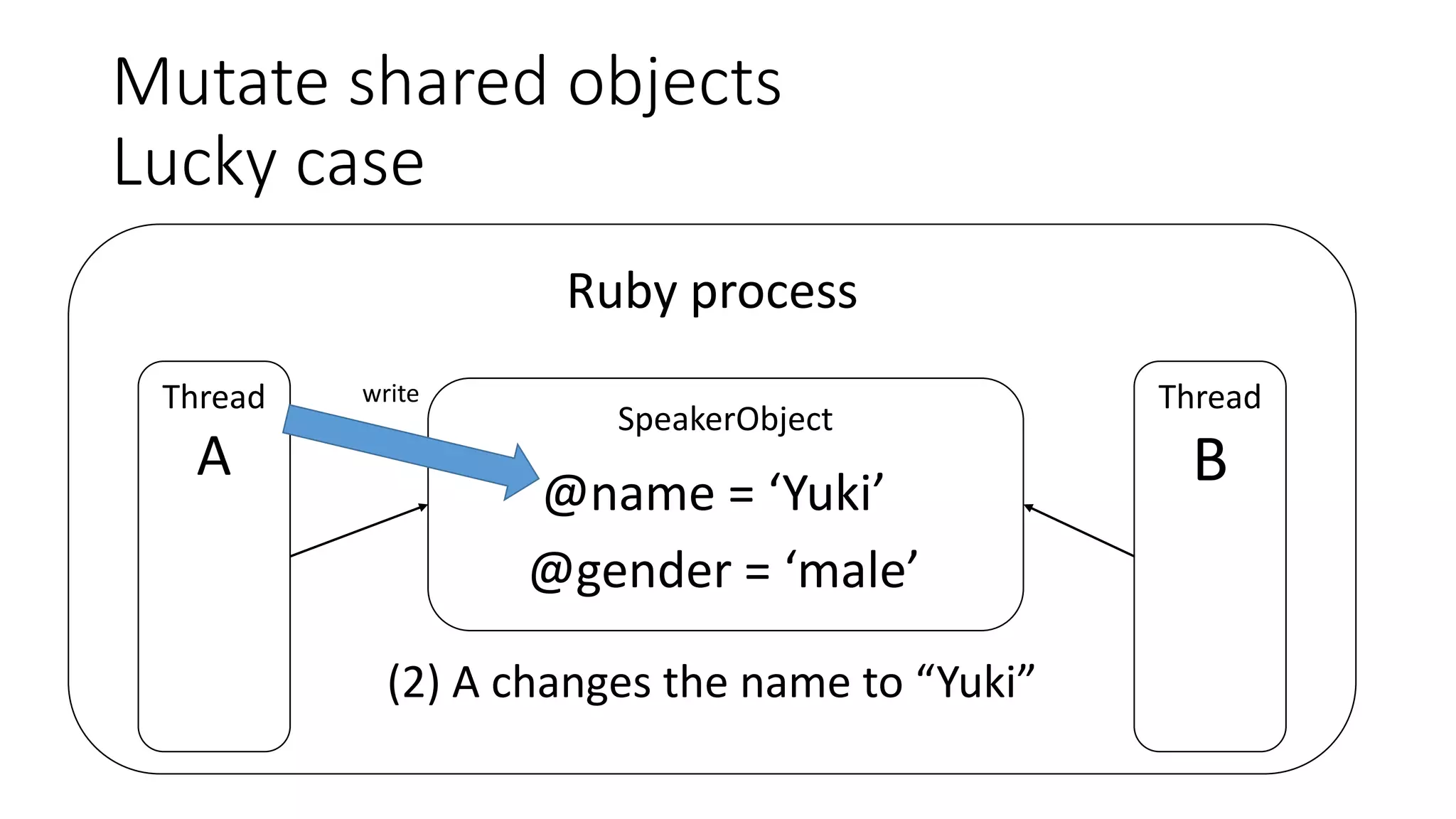
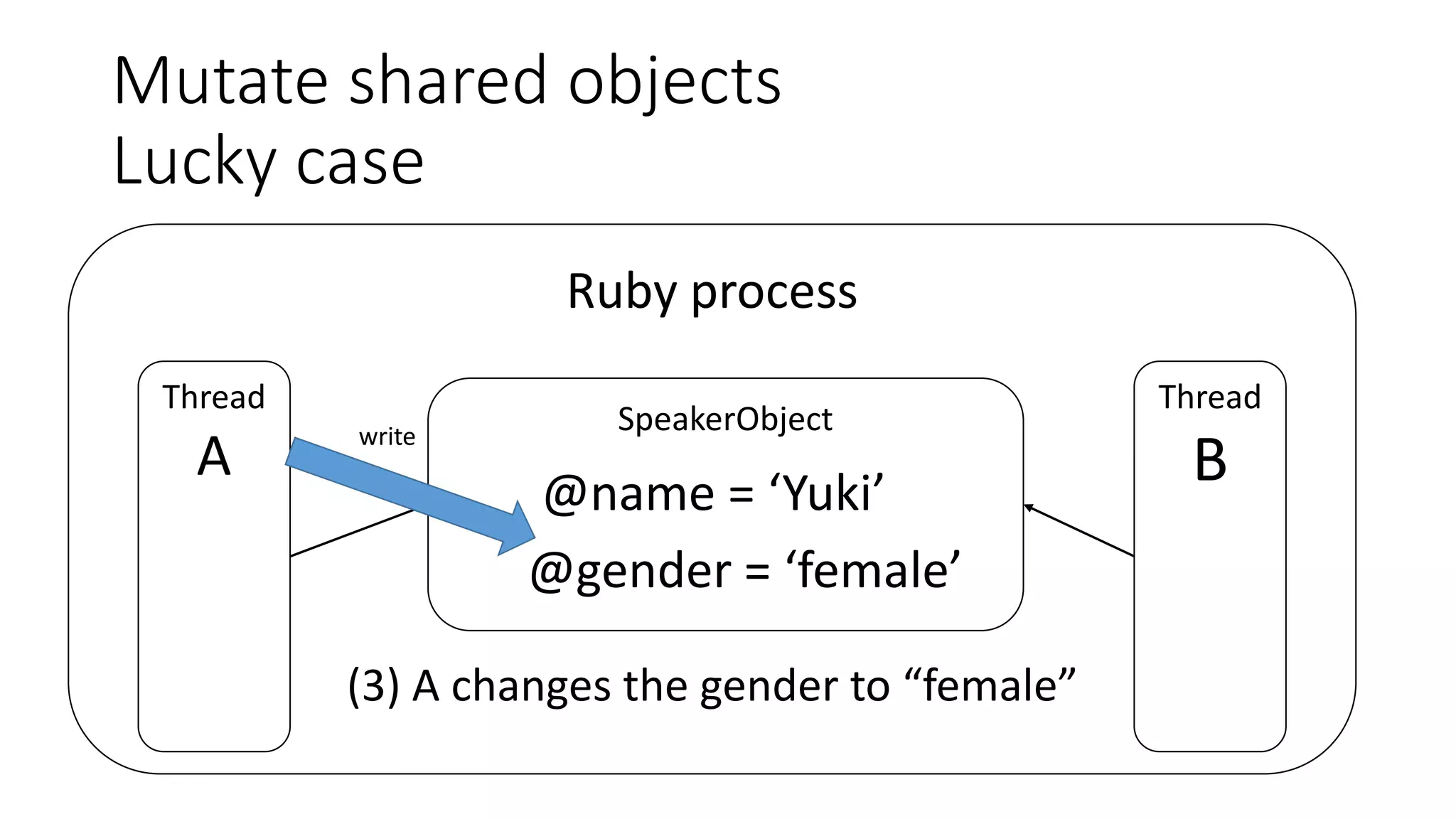
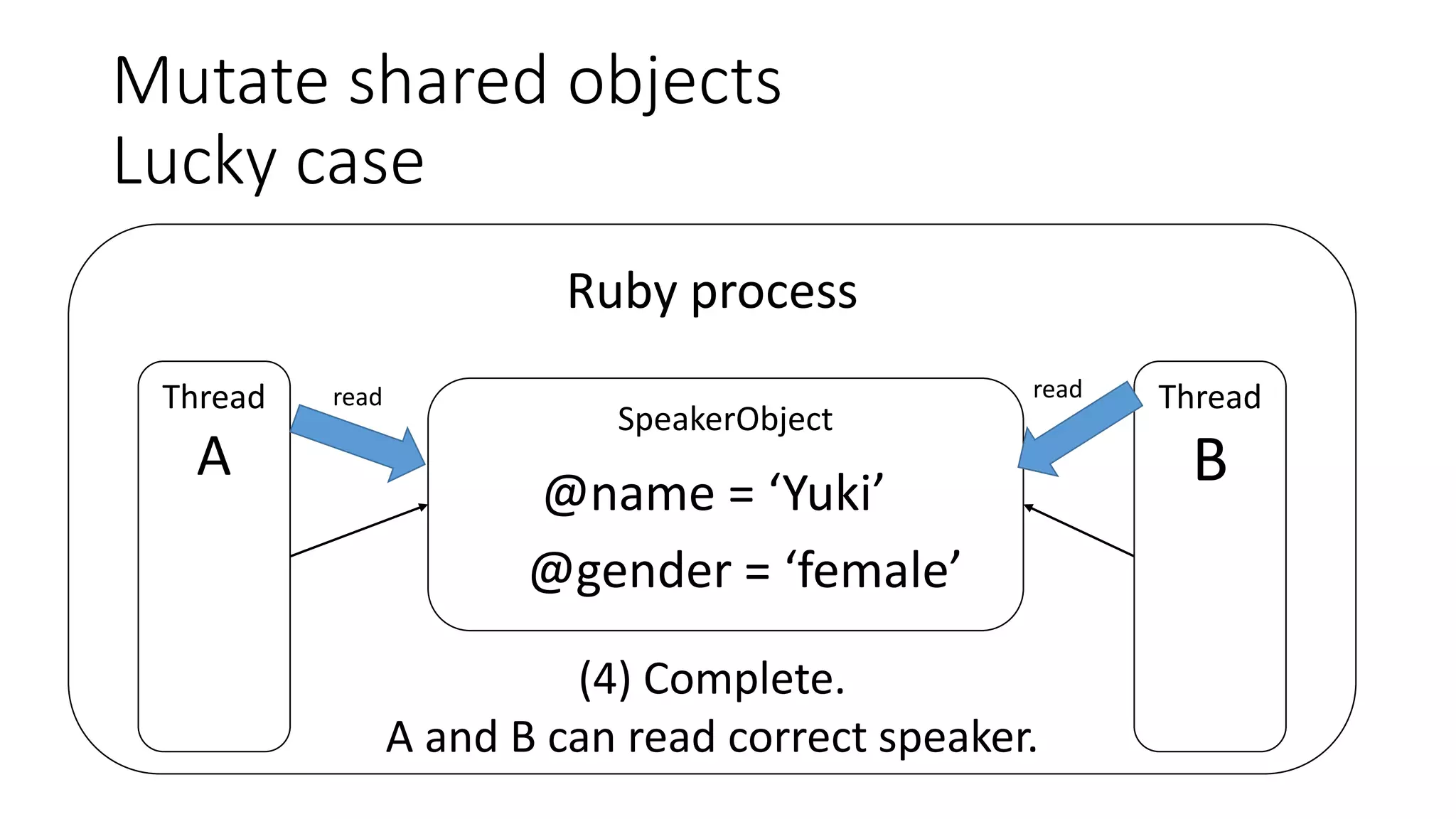

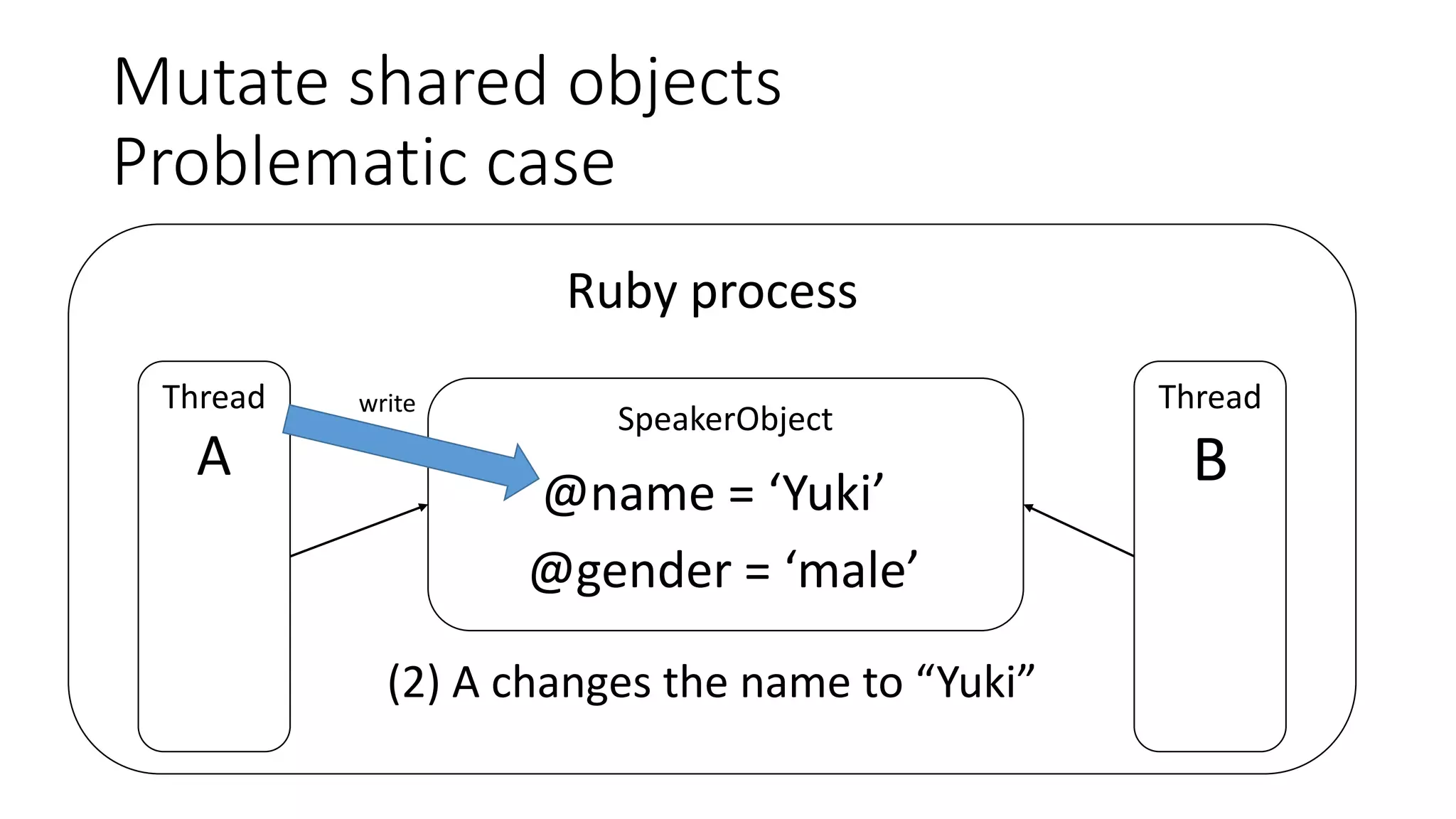
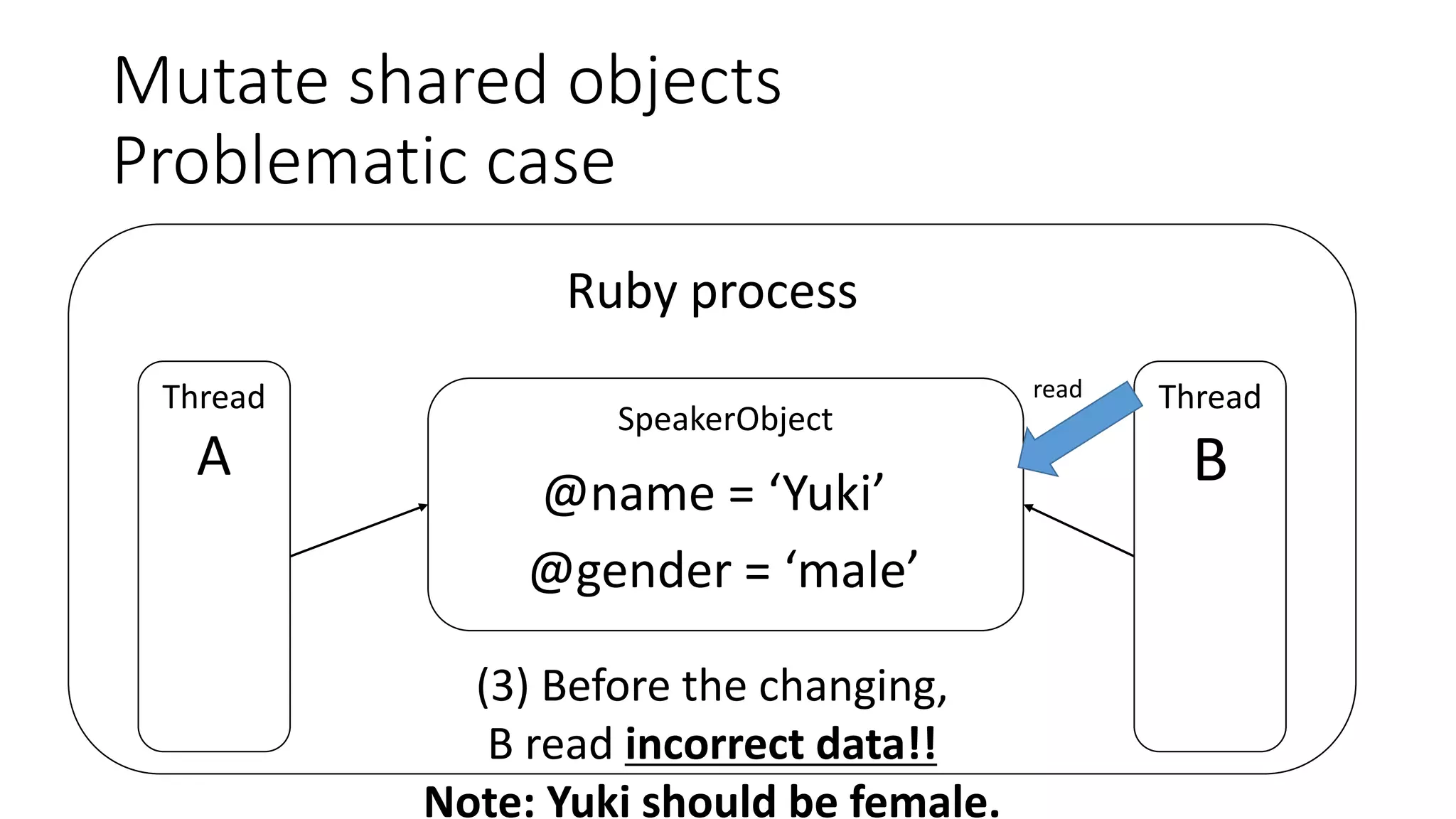
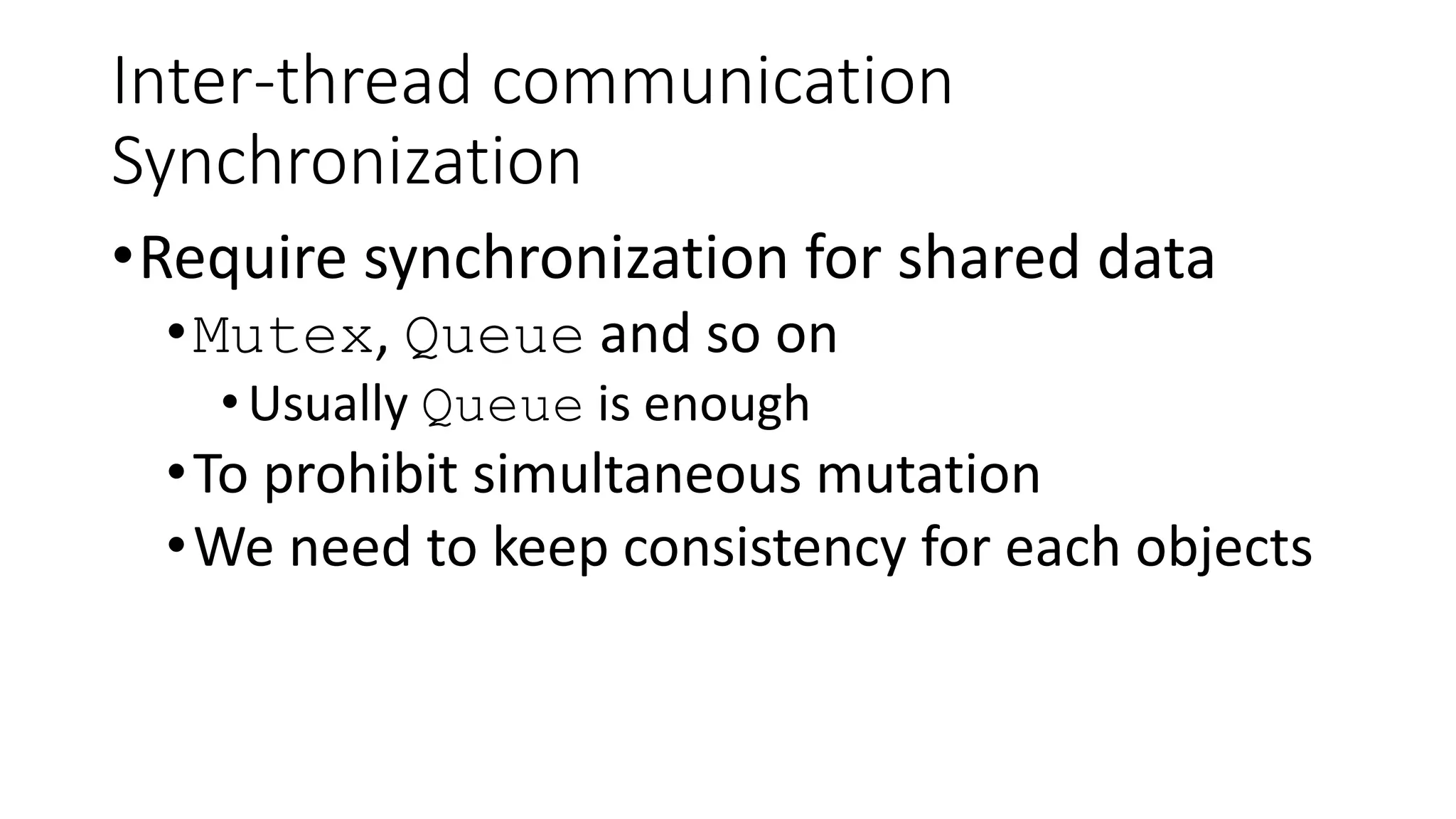
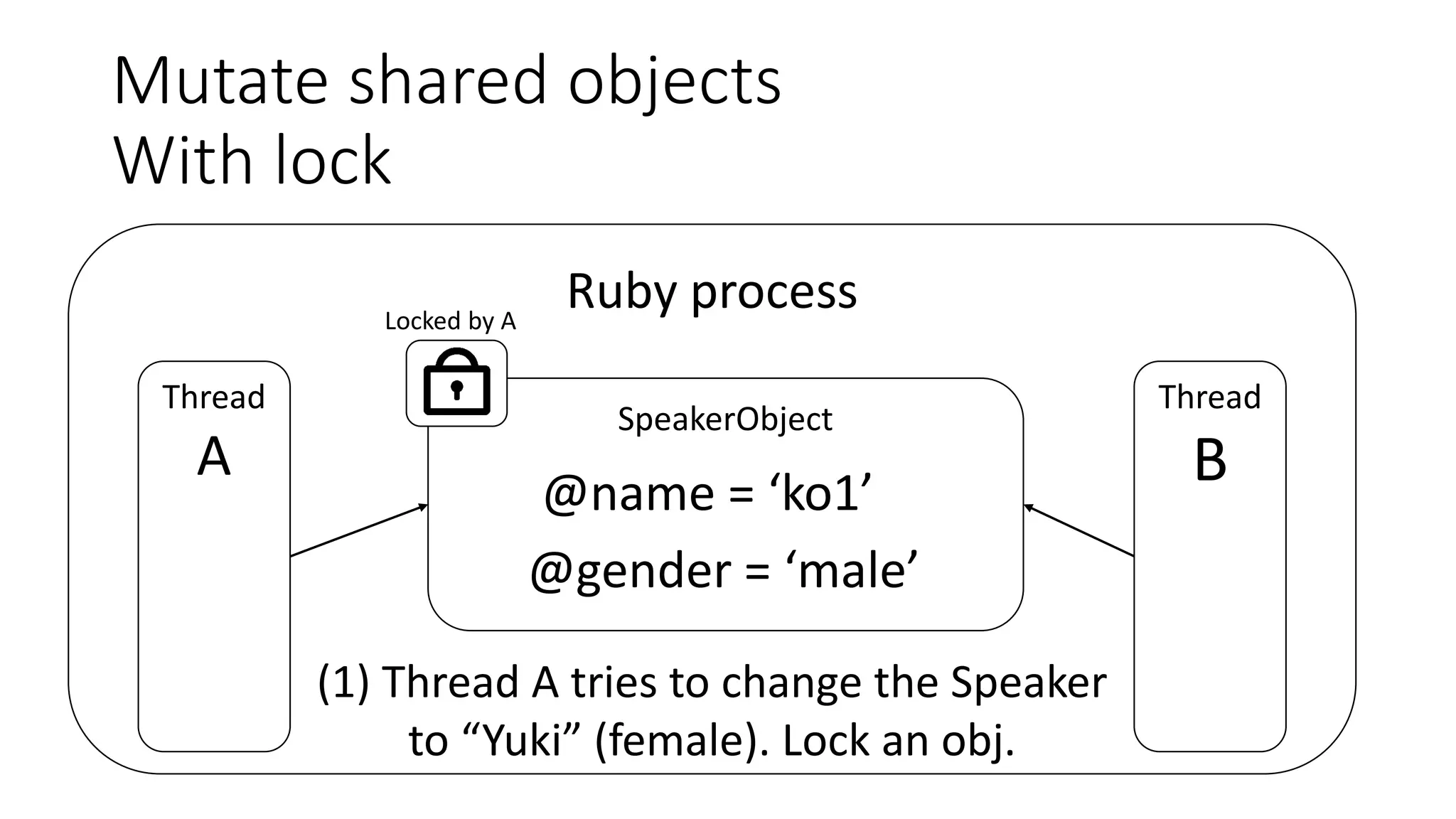
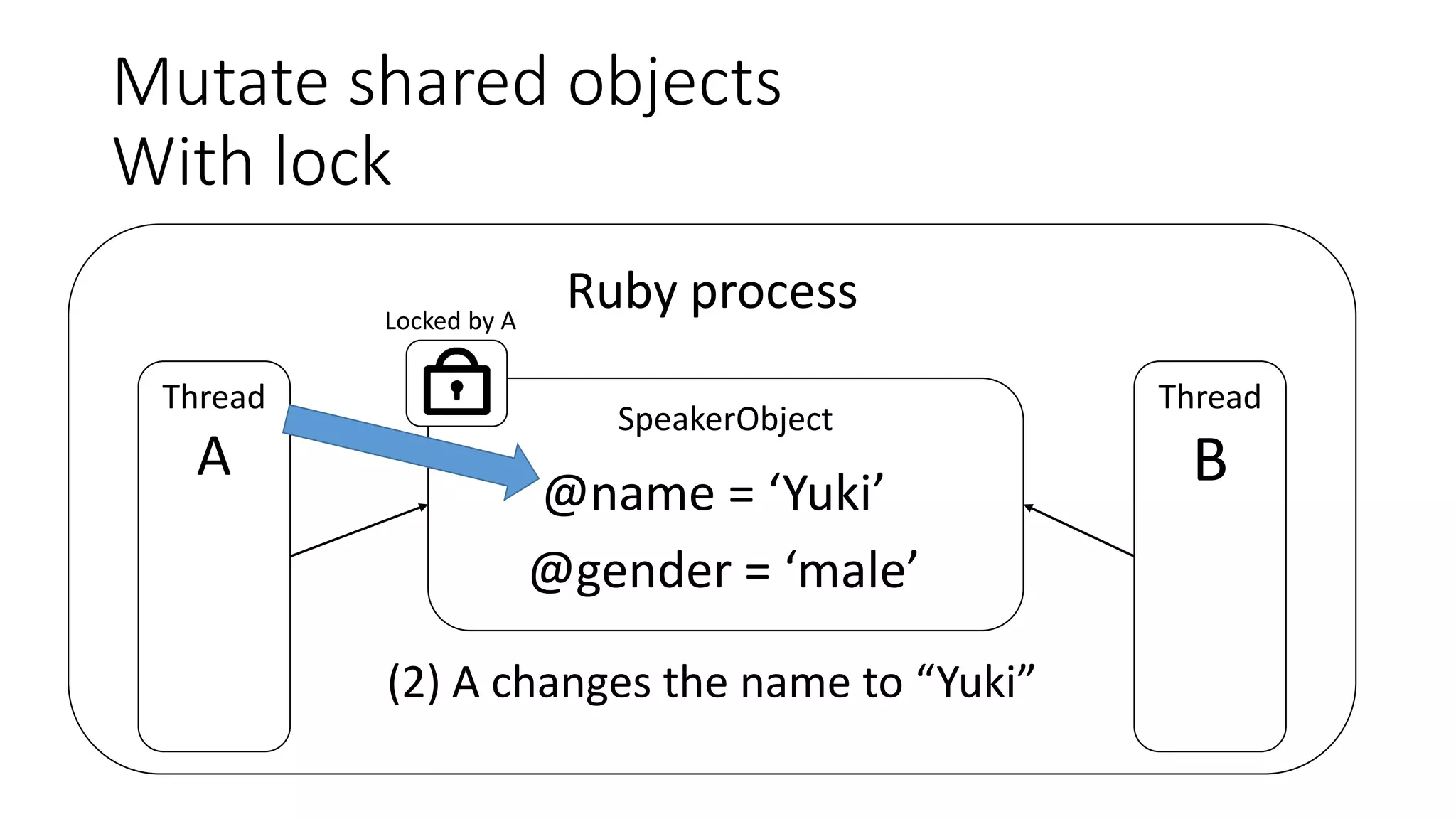
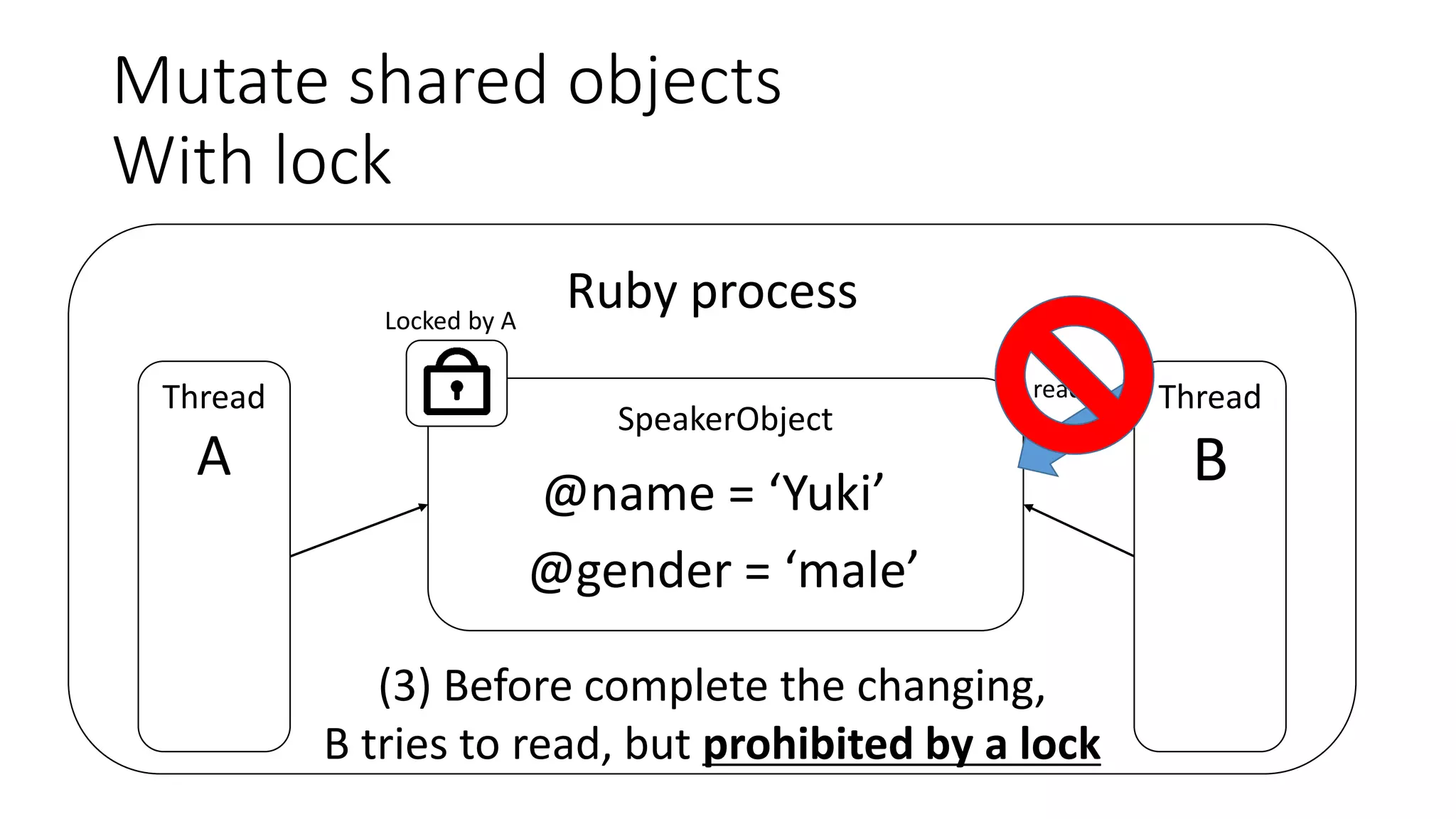
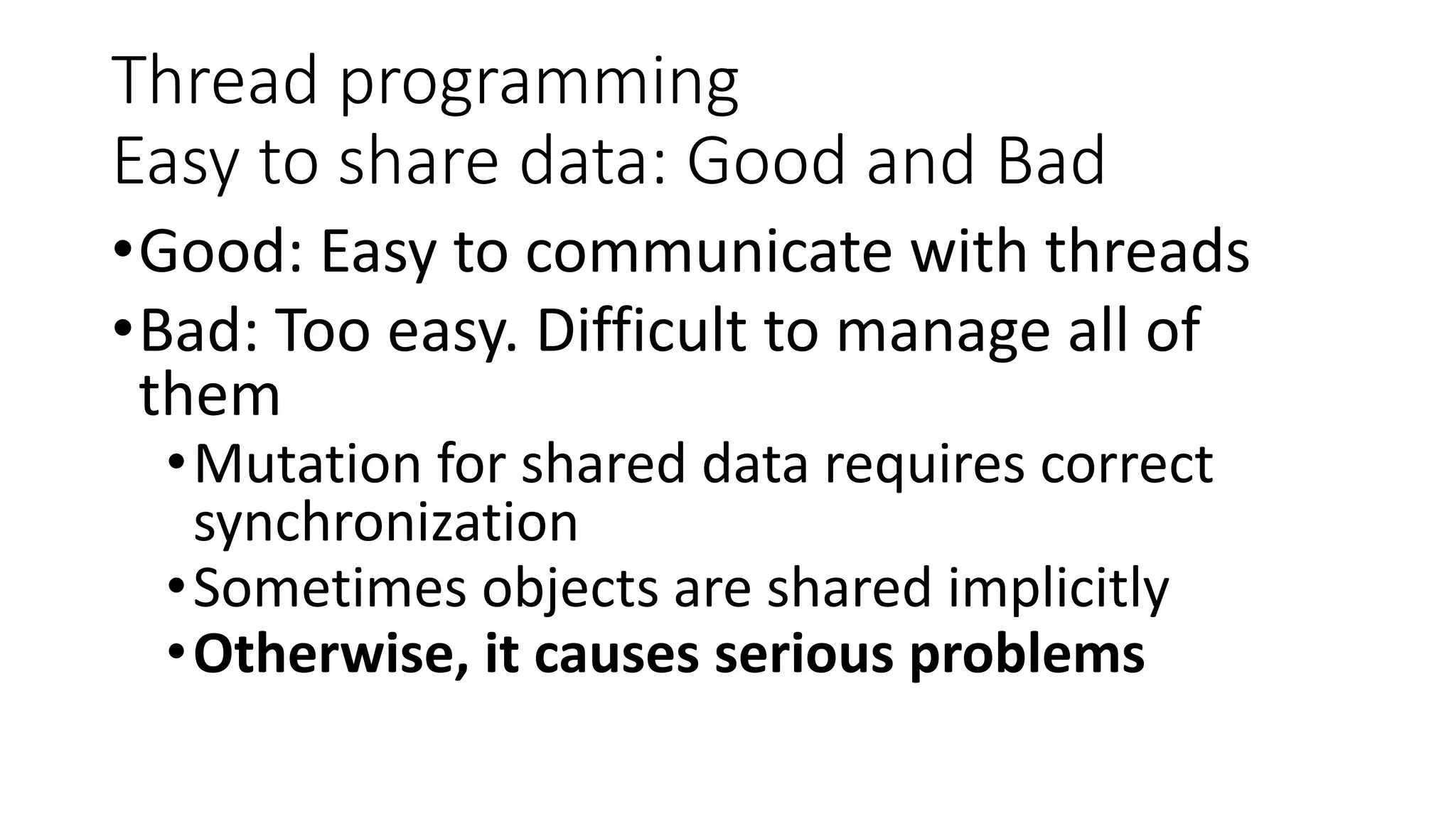
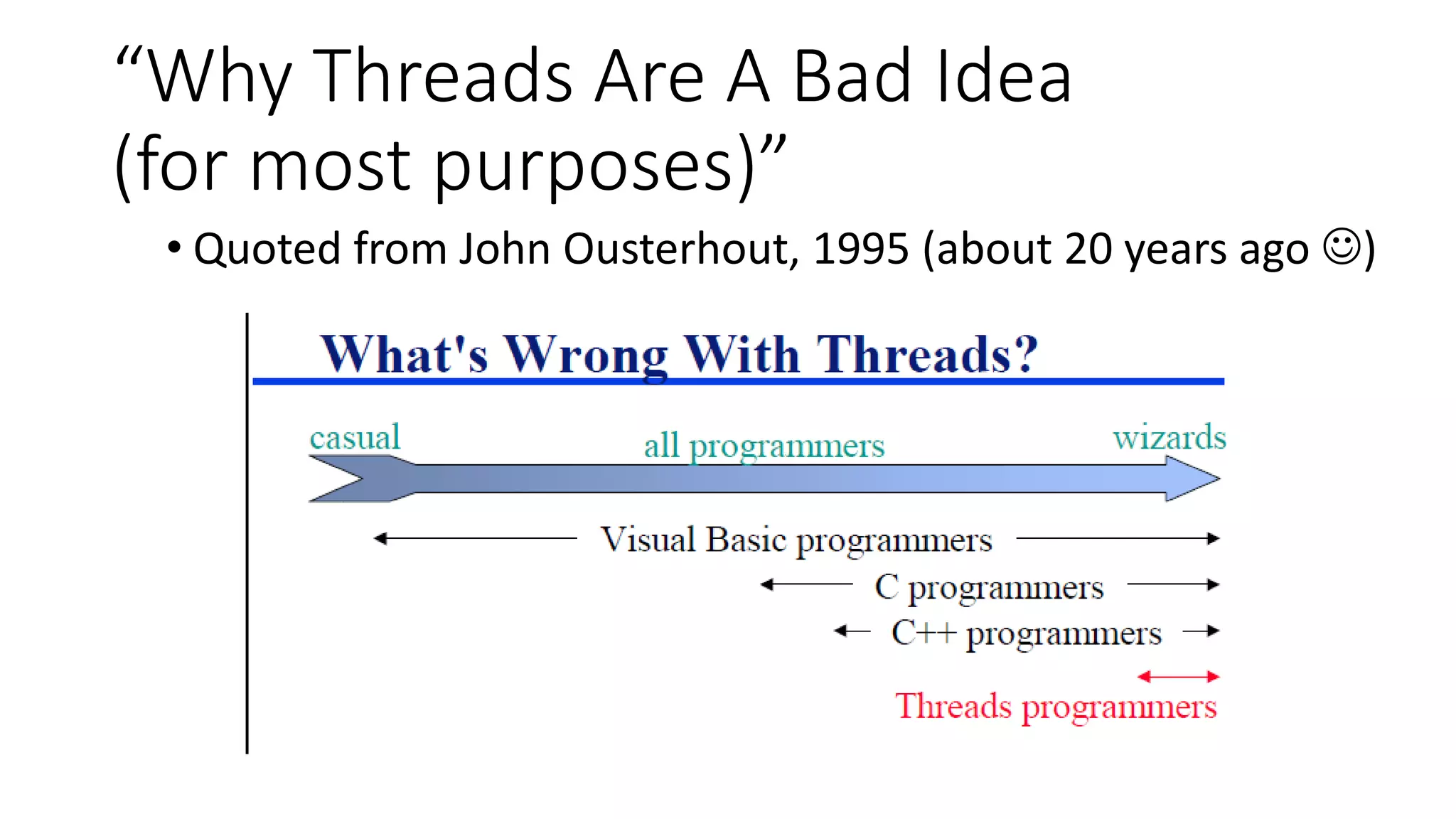
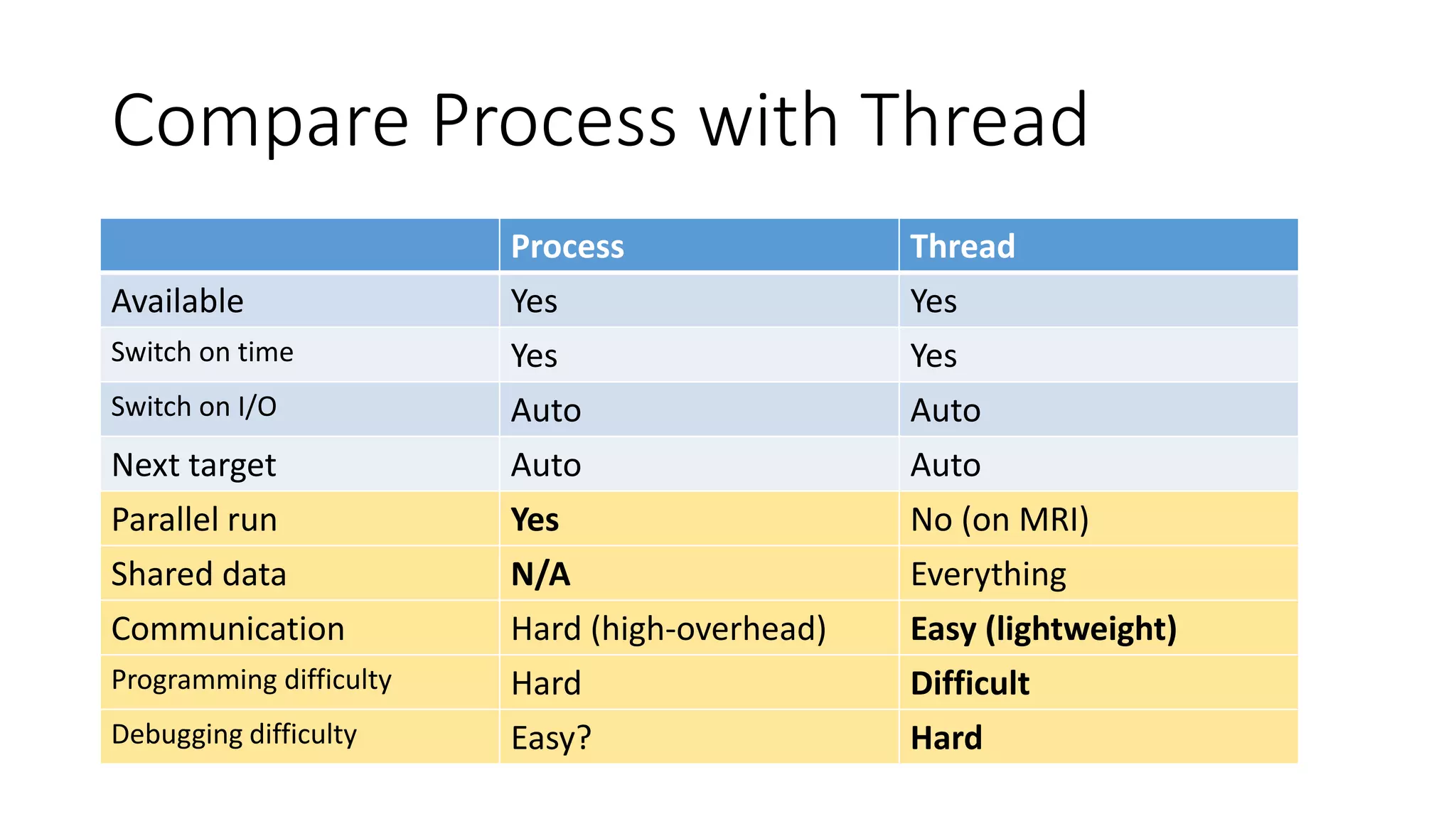

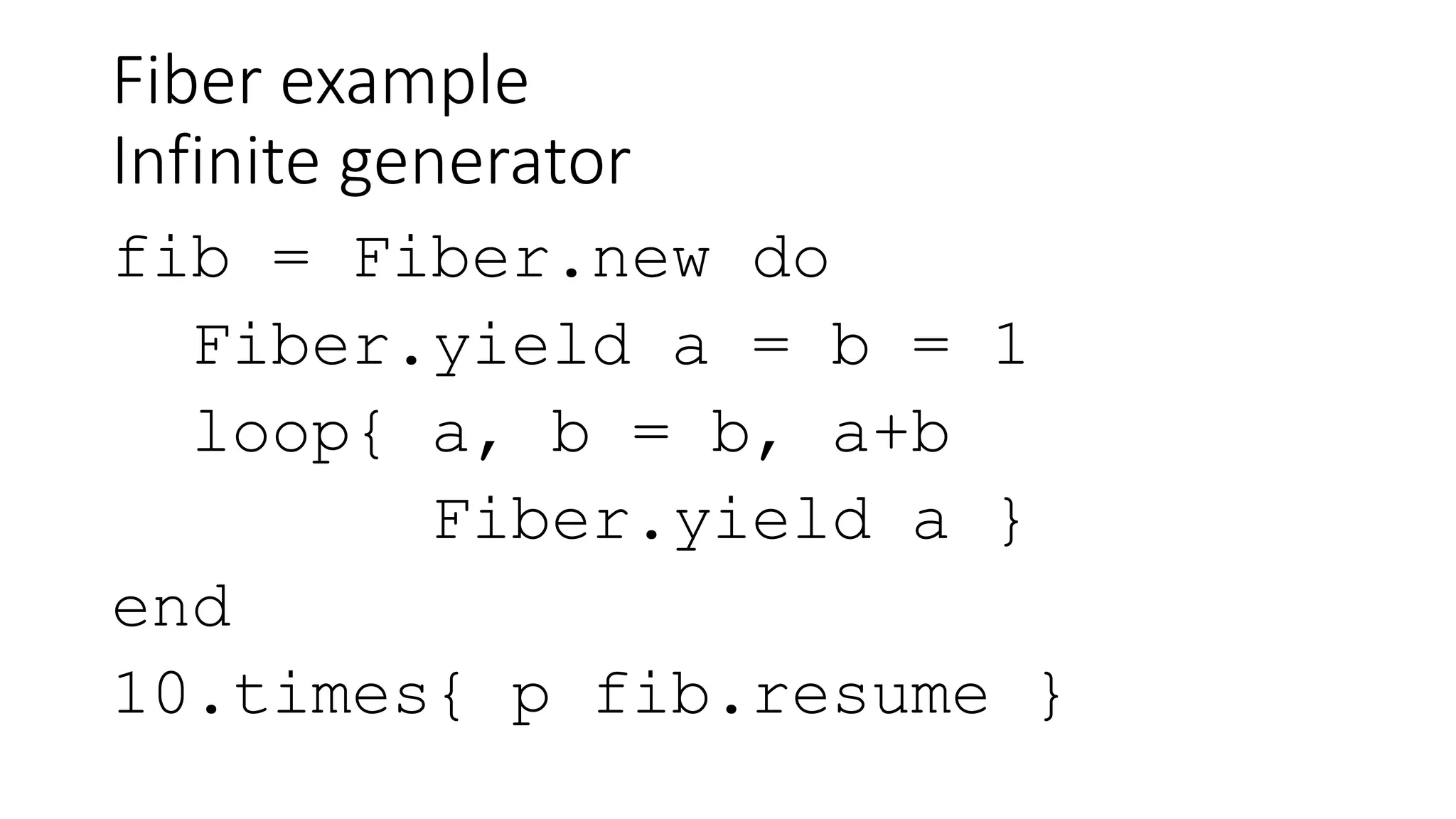
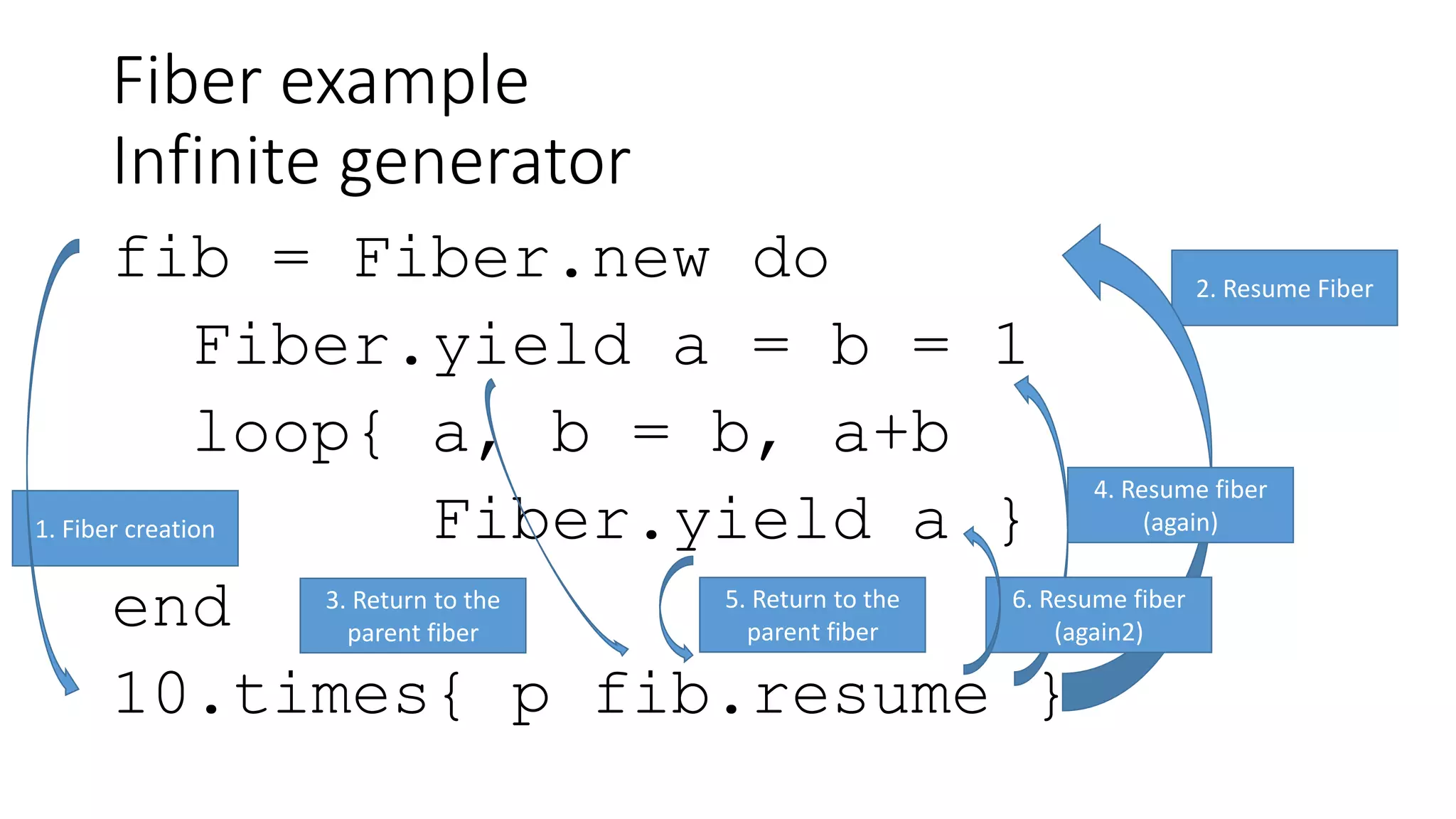
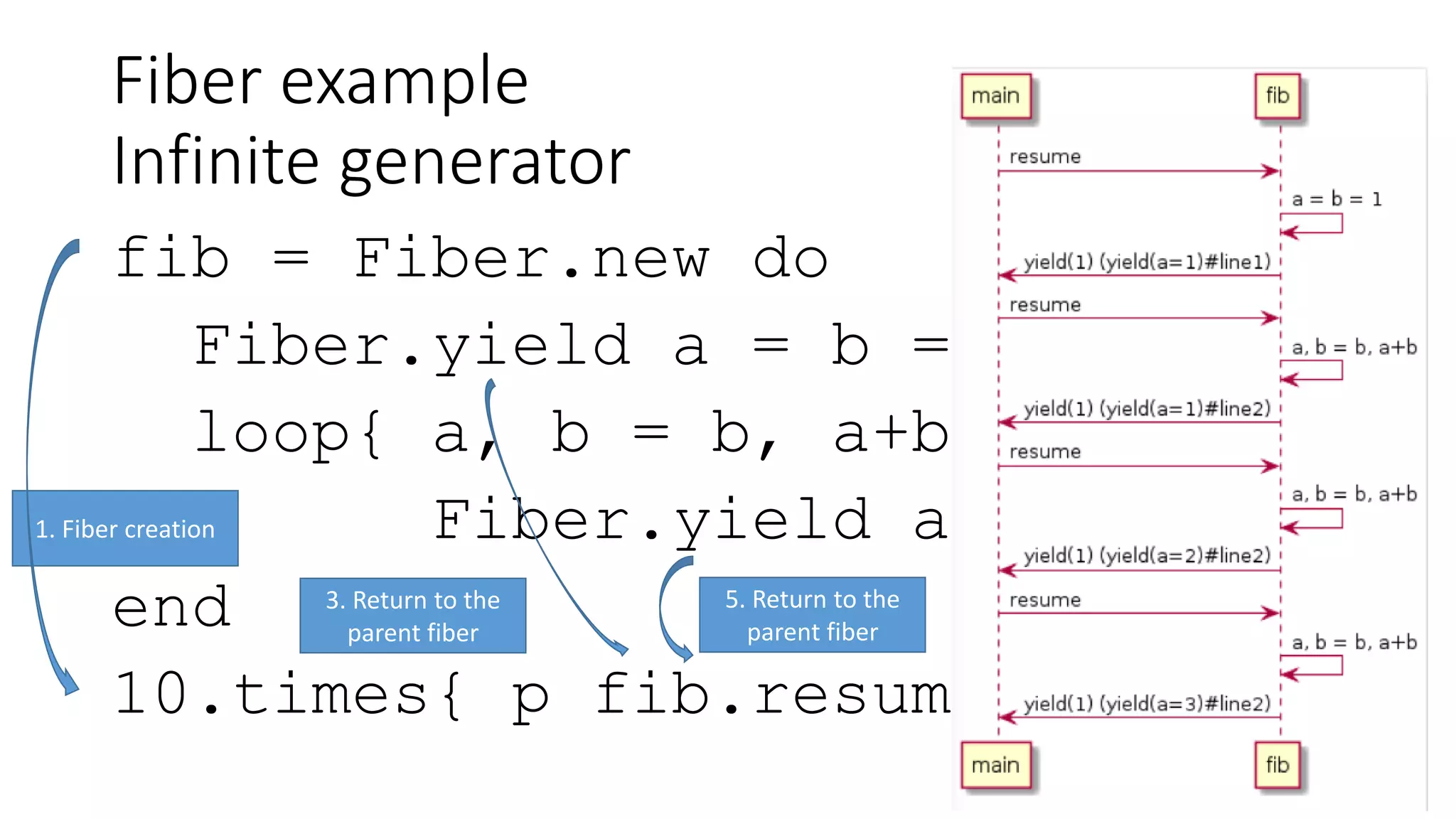
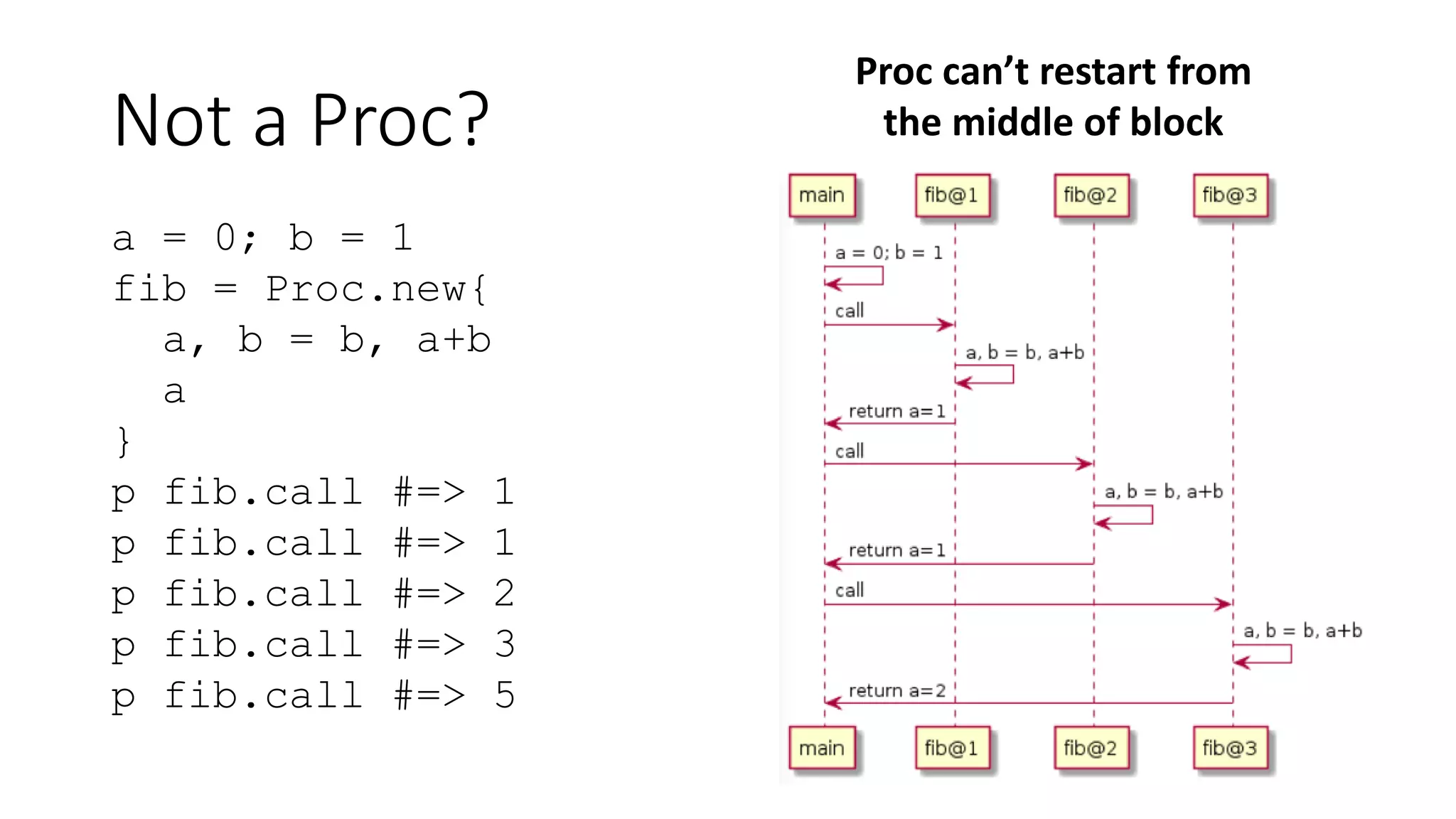
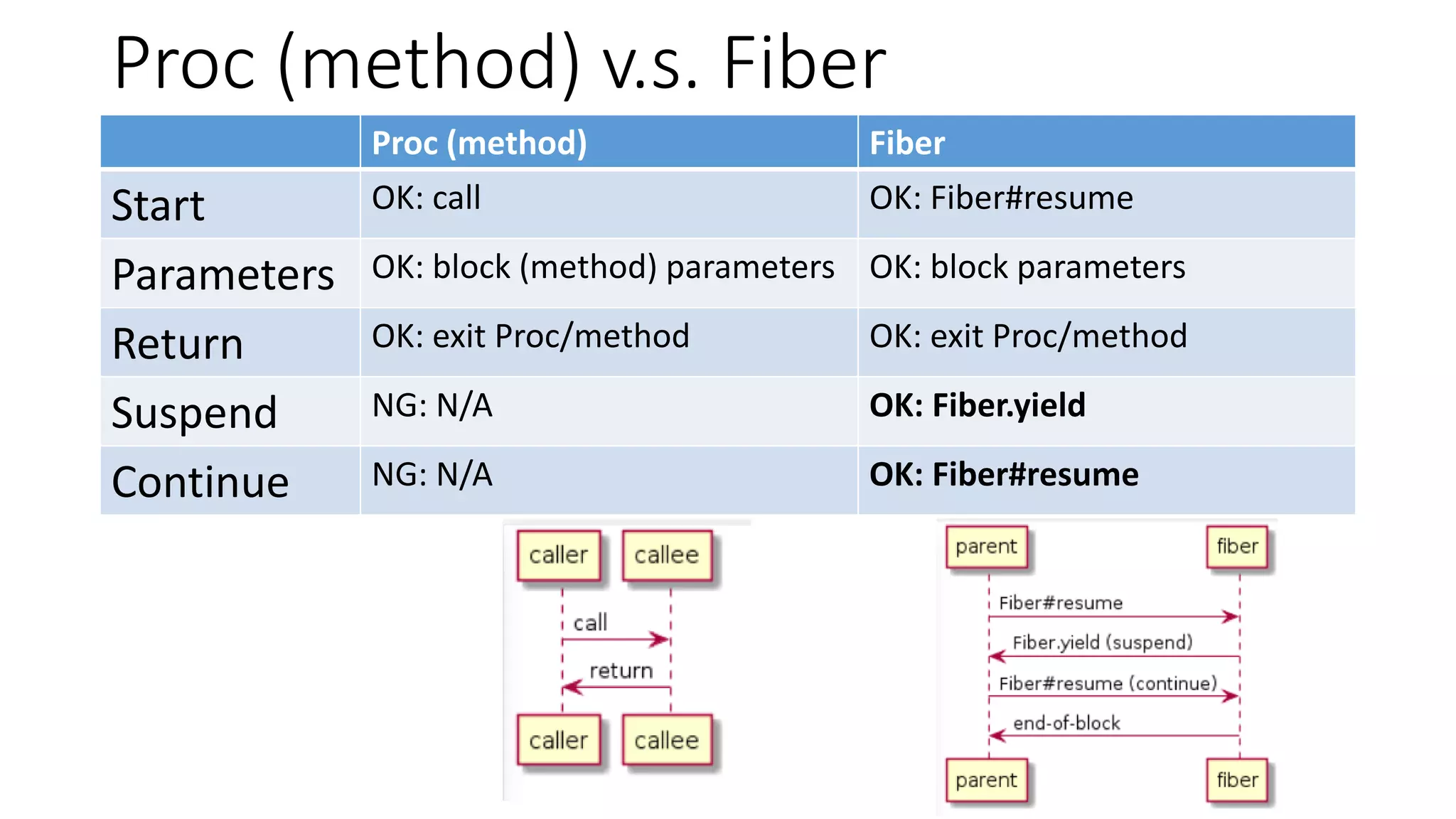
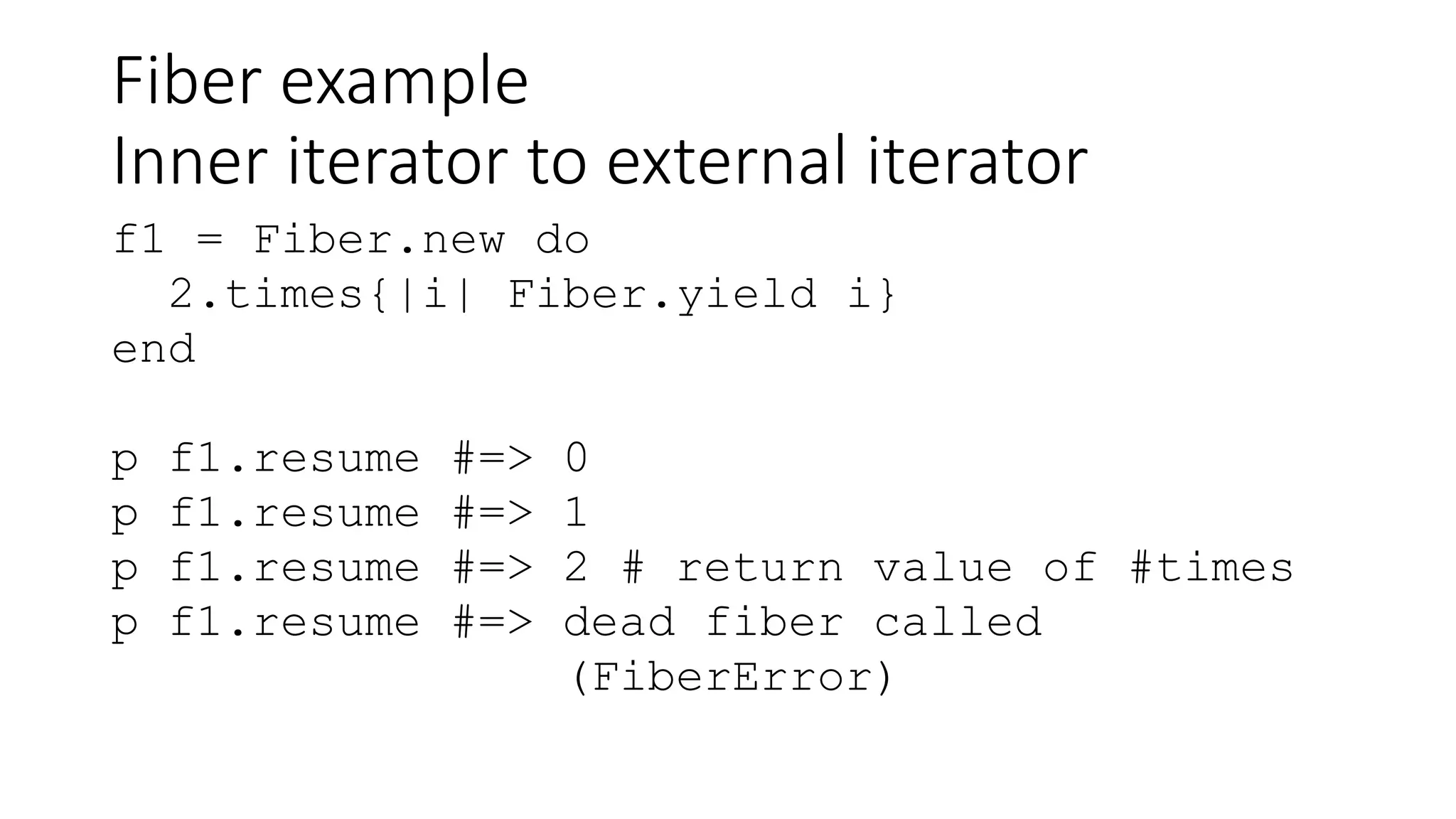
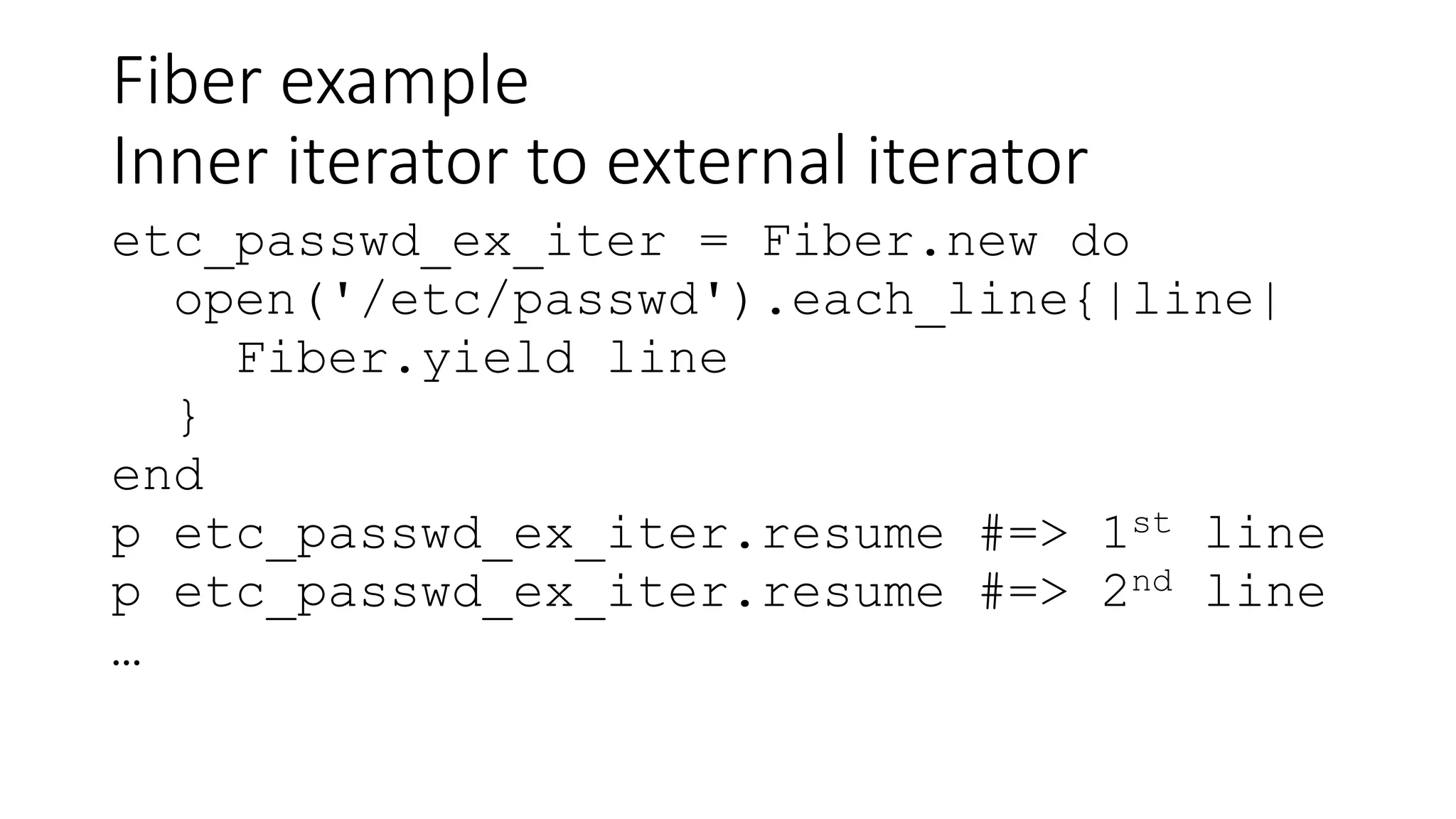
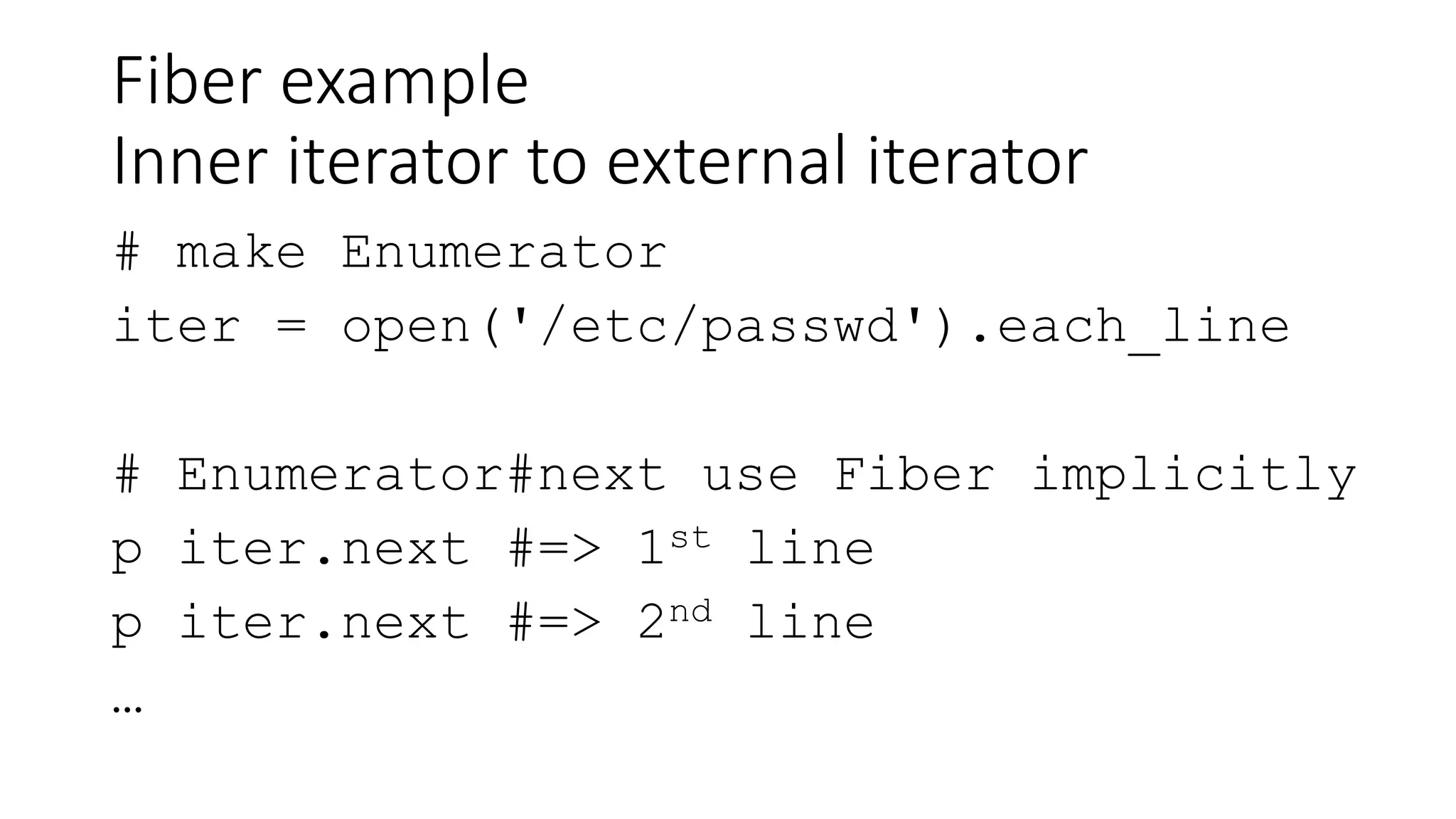

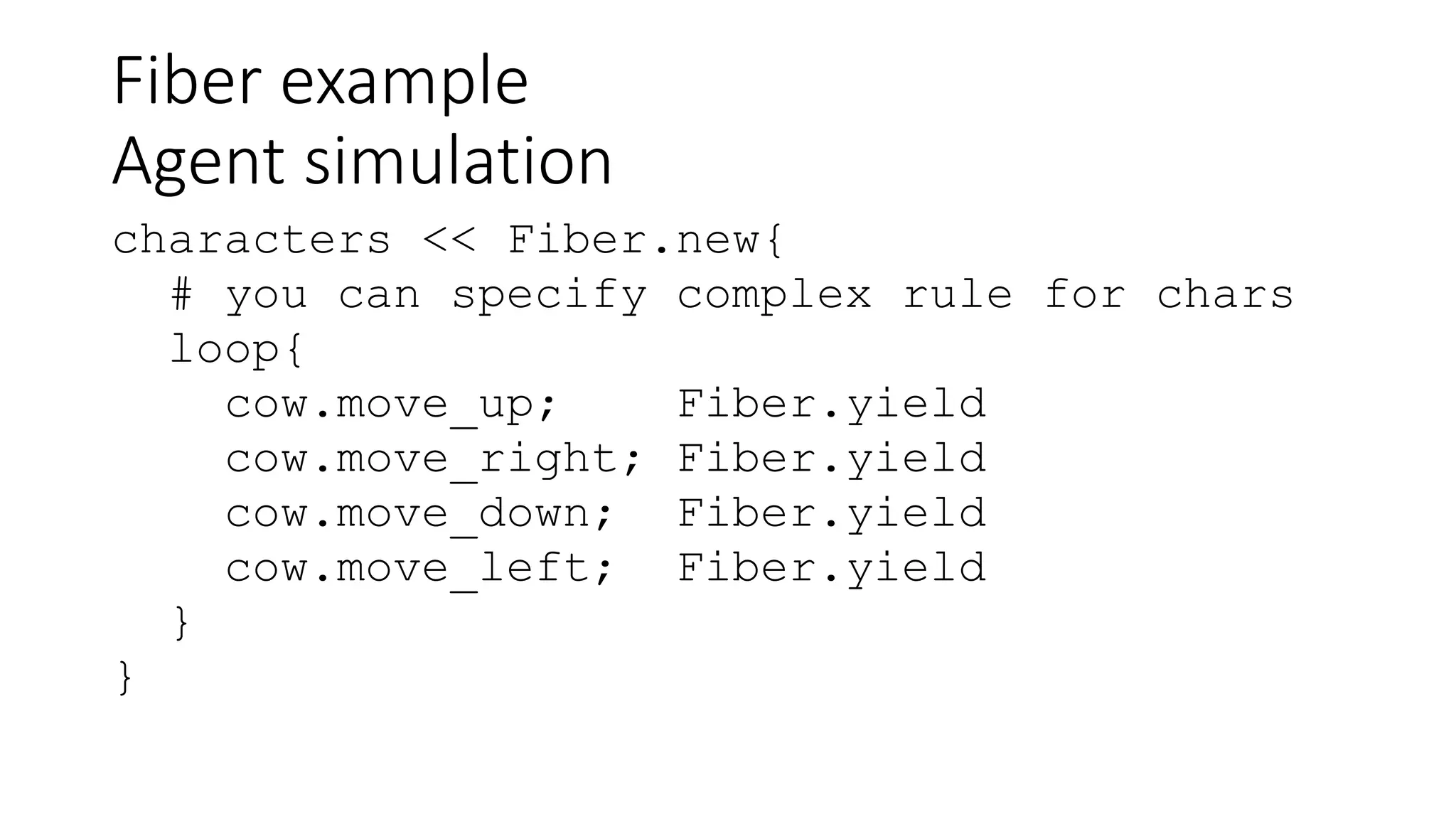

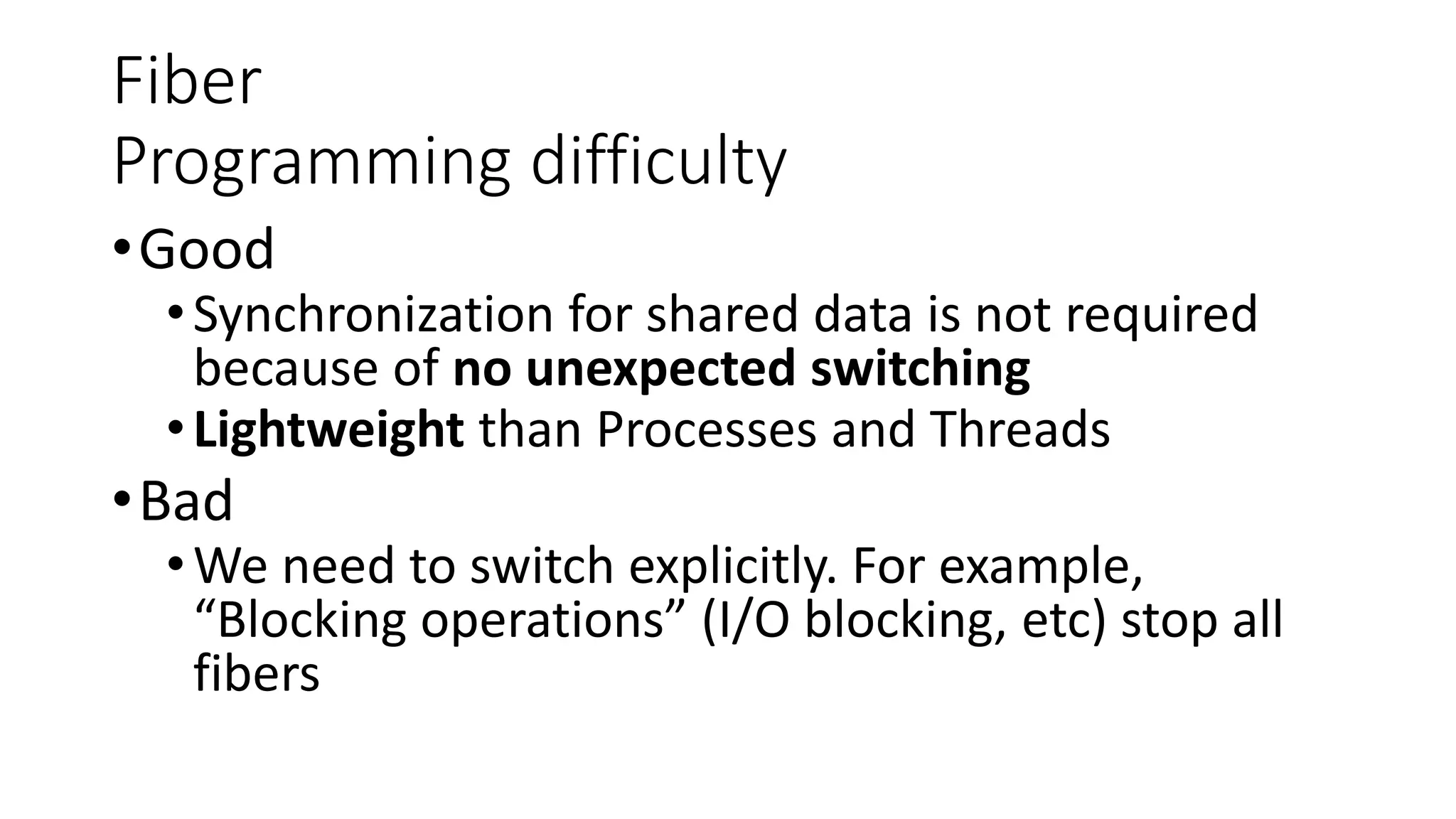
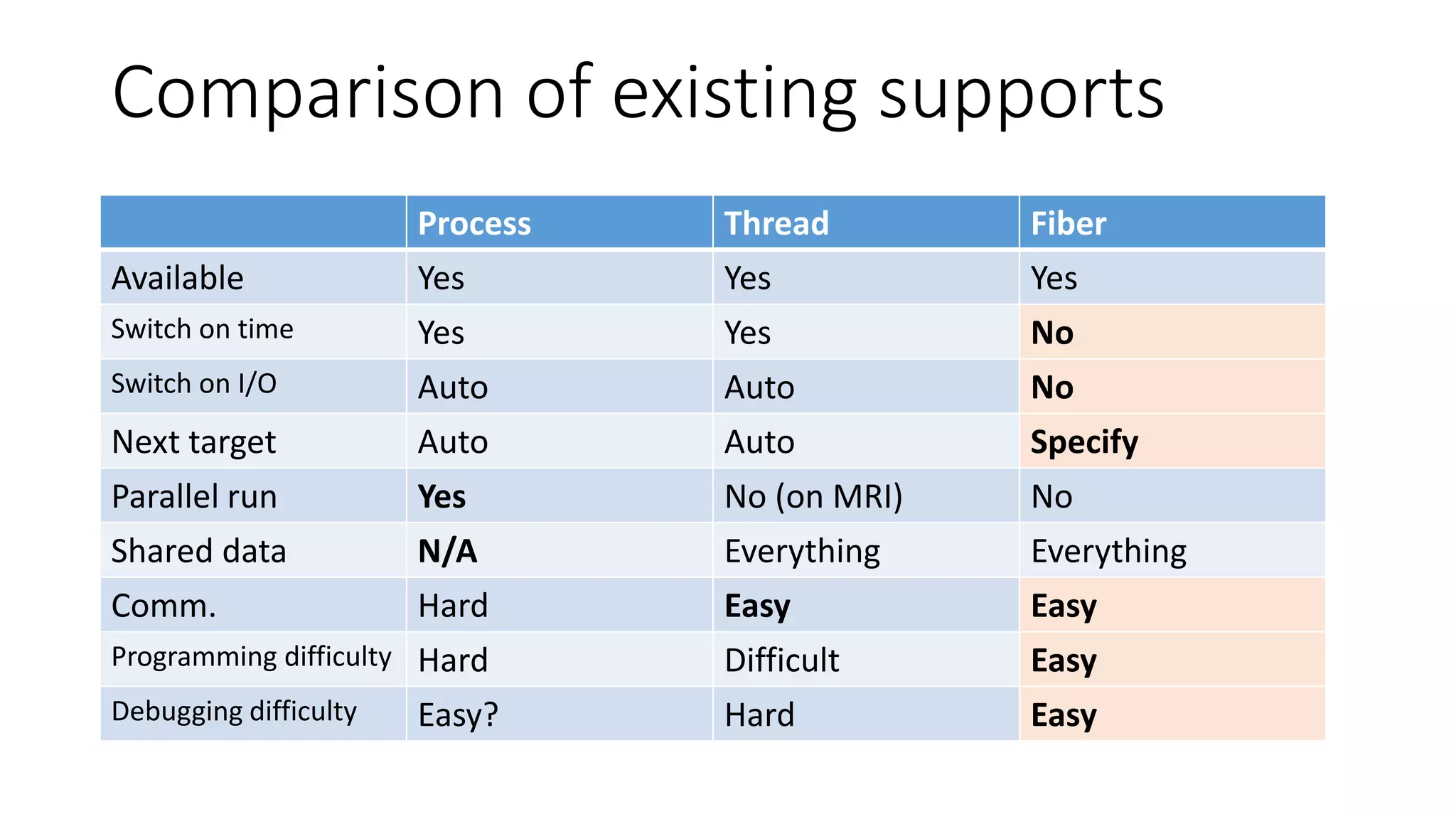
![Fiber: Brief history
•2007/05/23 cont.c (for callcc)
•2007/05/25 Fiber impl. [ruby-dev:30827]
•2007/05/28 Fiber introduced into cont.c
•2007/08/25 Fix Fiber spec
•2017 is 10th anniversary I introduced ☺](https://image.slidesharecdn.com/2017rubyconfjakarta-171226022013/75/Ruby-s-Concurrency-Management-Now-and-Future-59-2048.jpg)



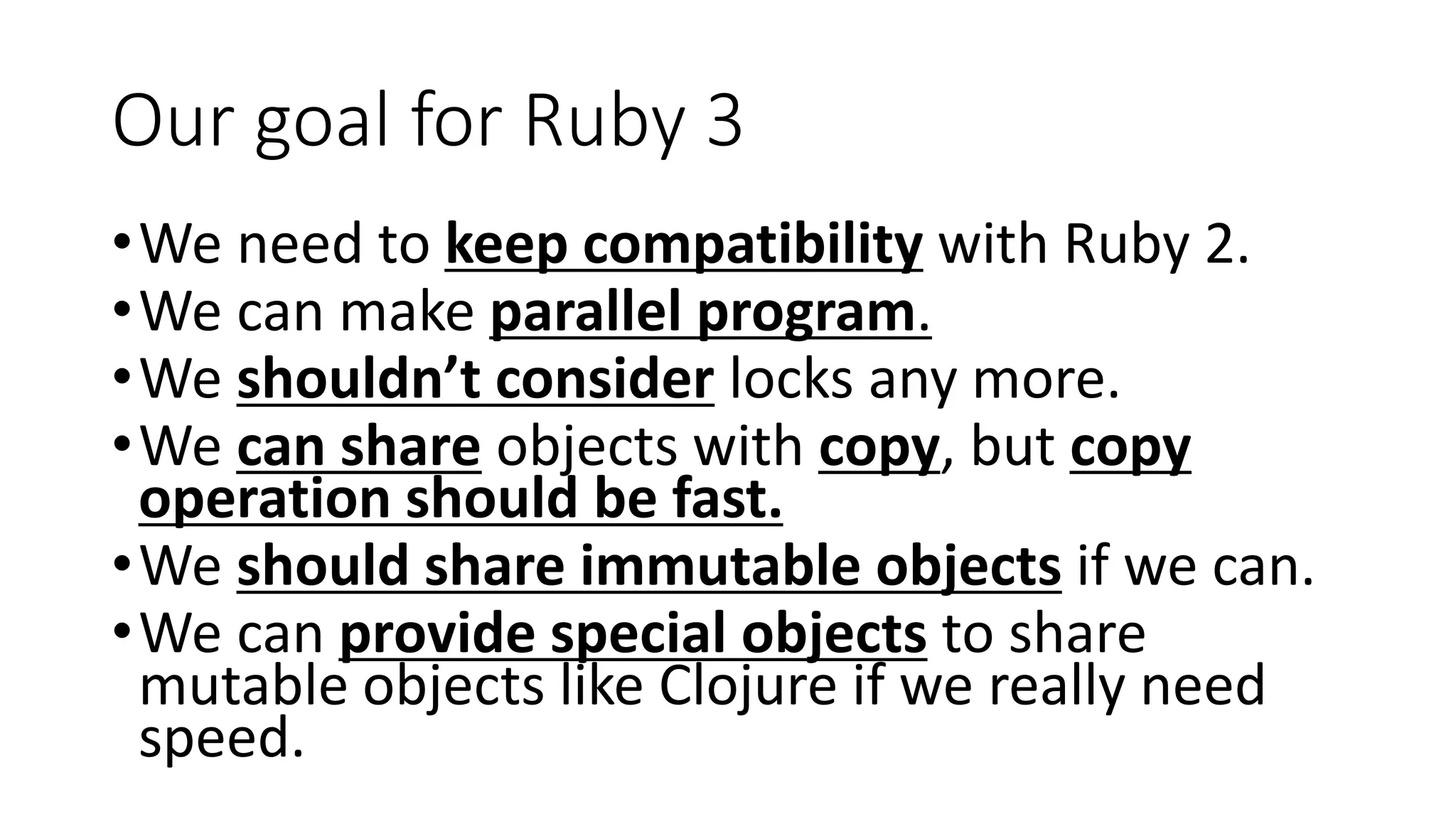
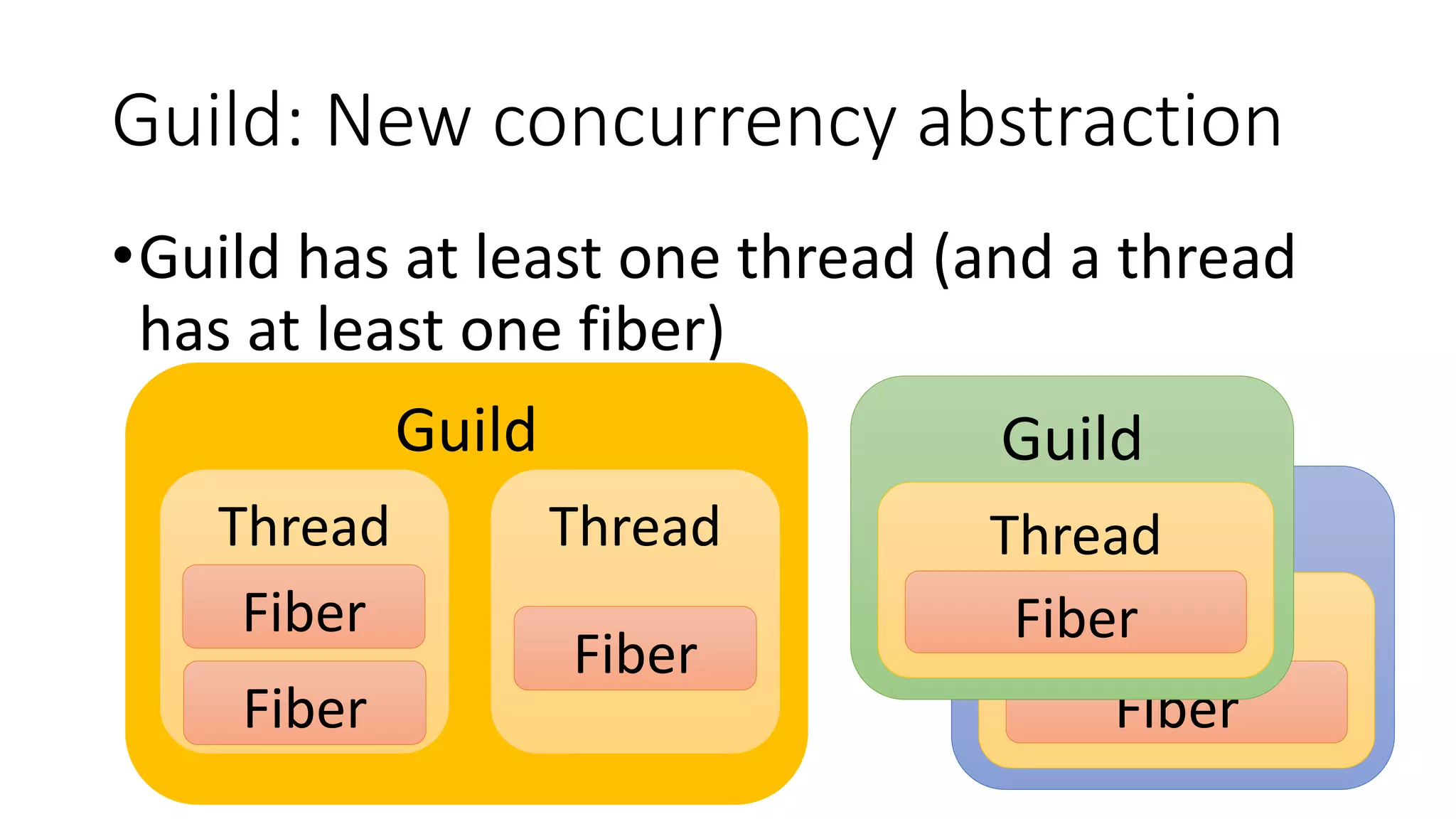
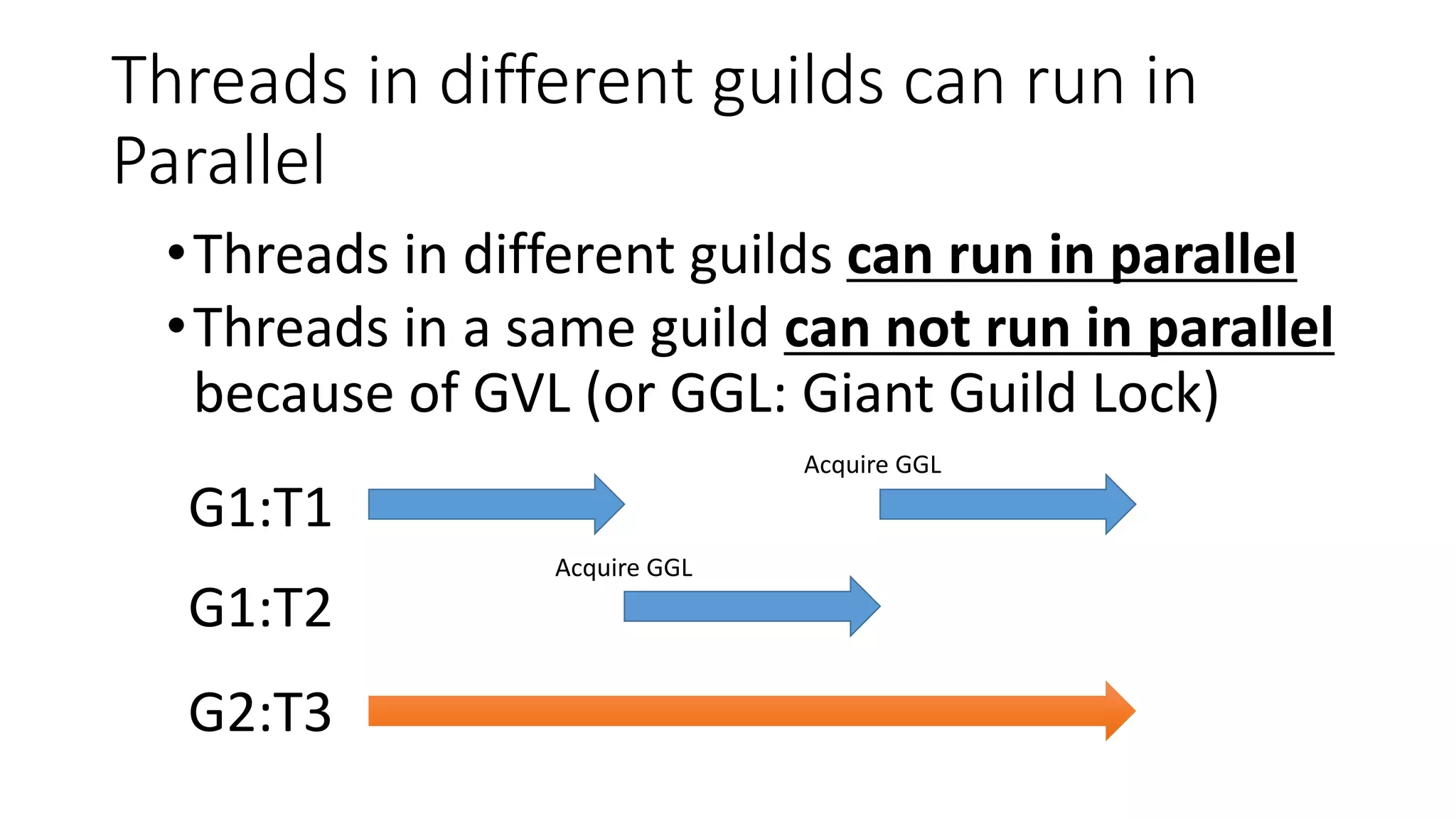
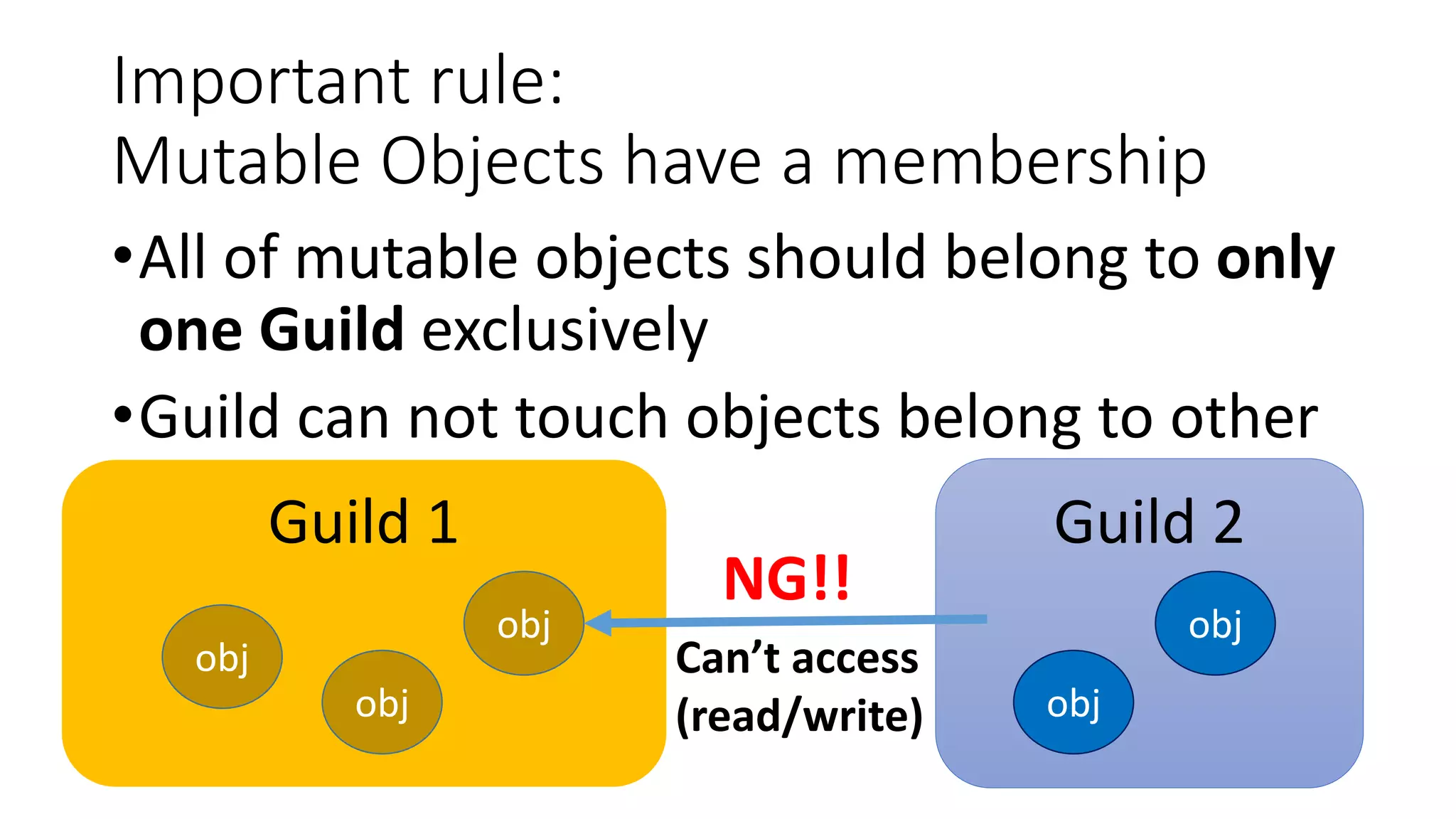
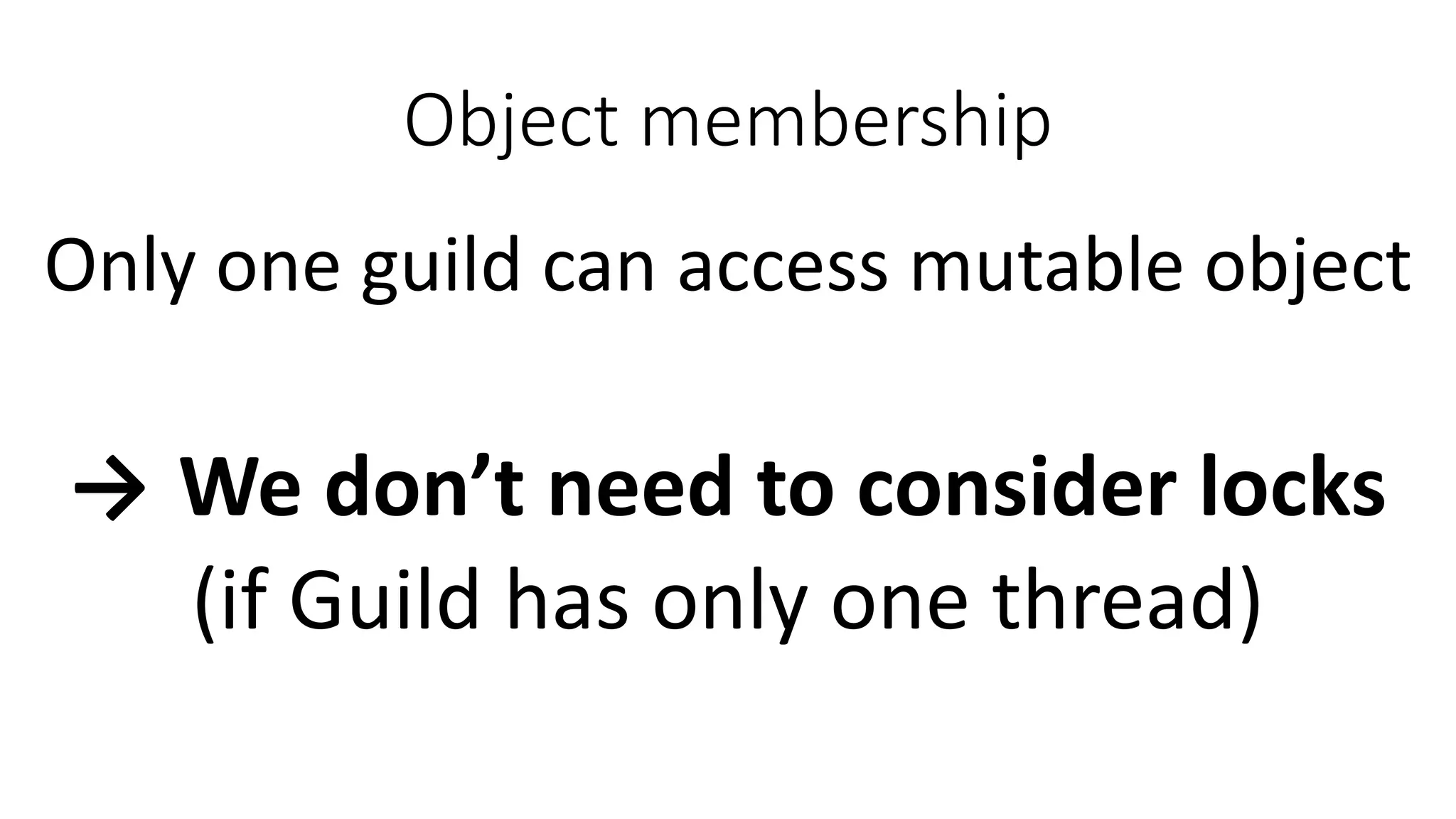
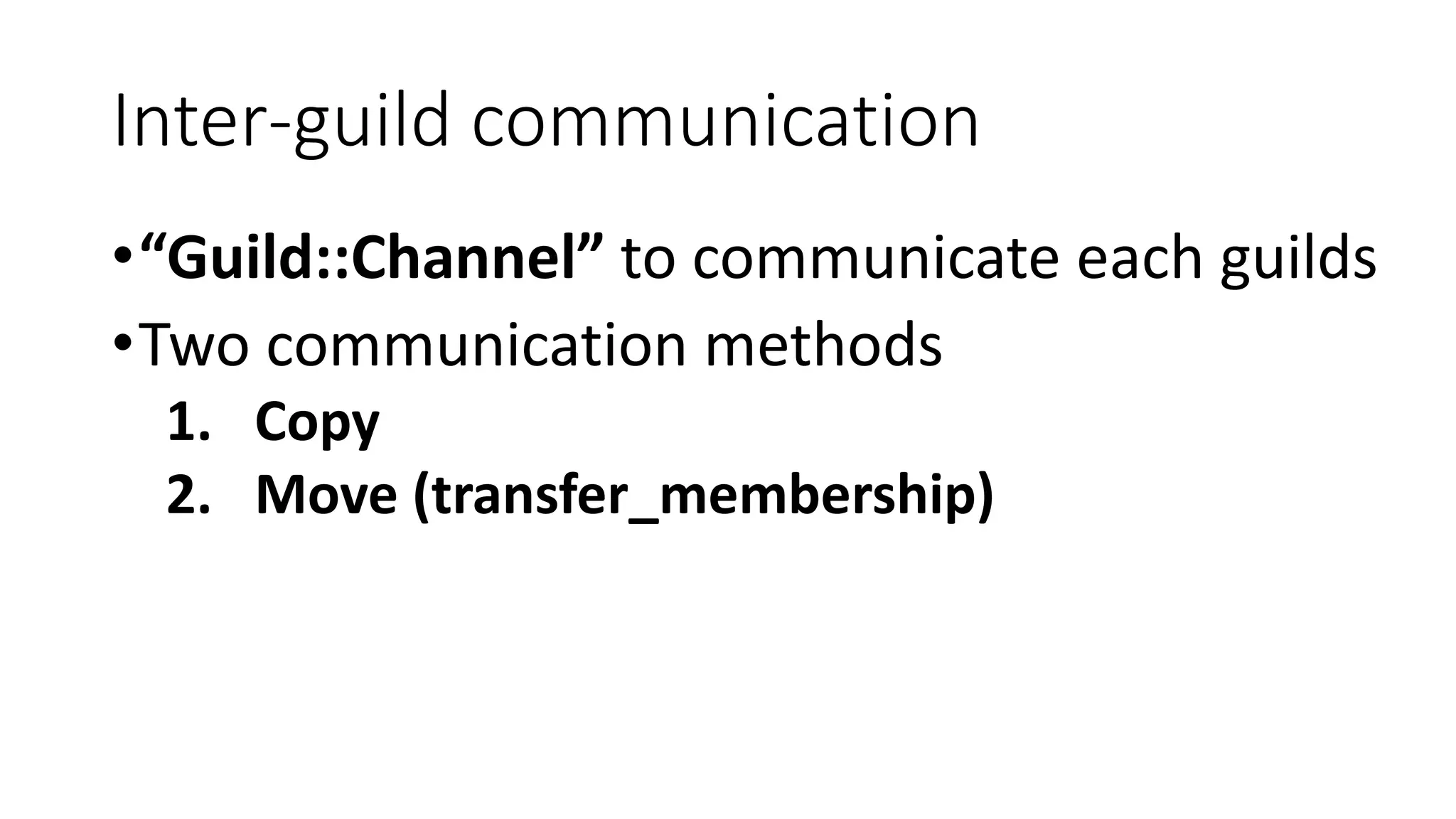
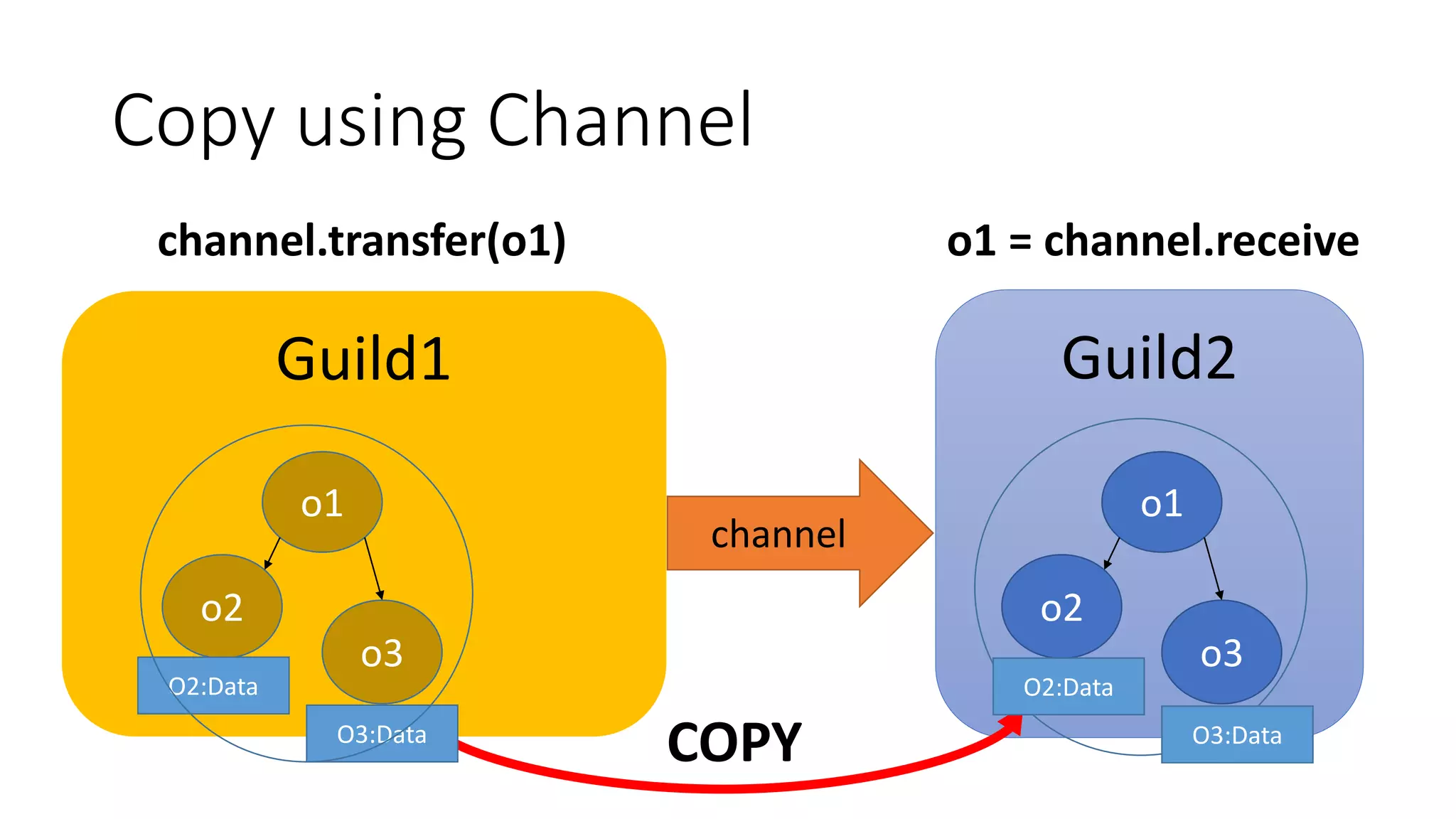
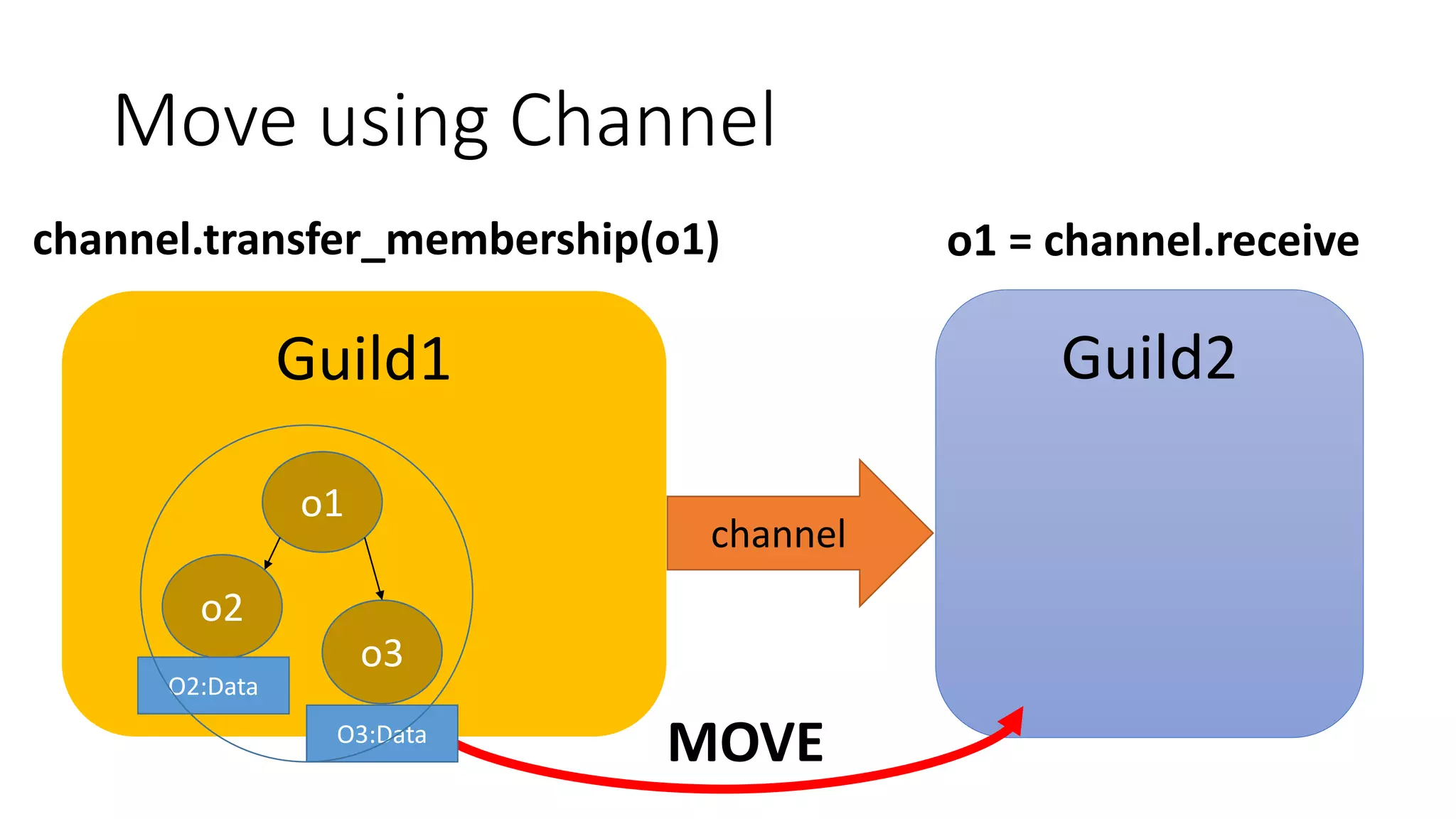
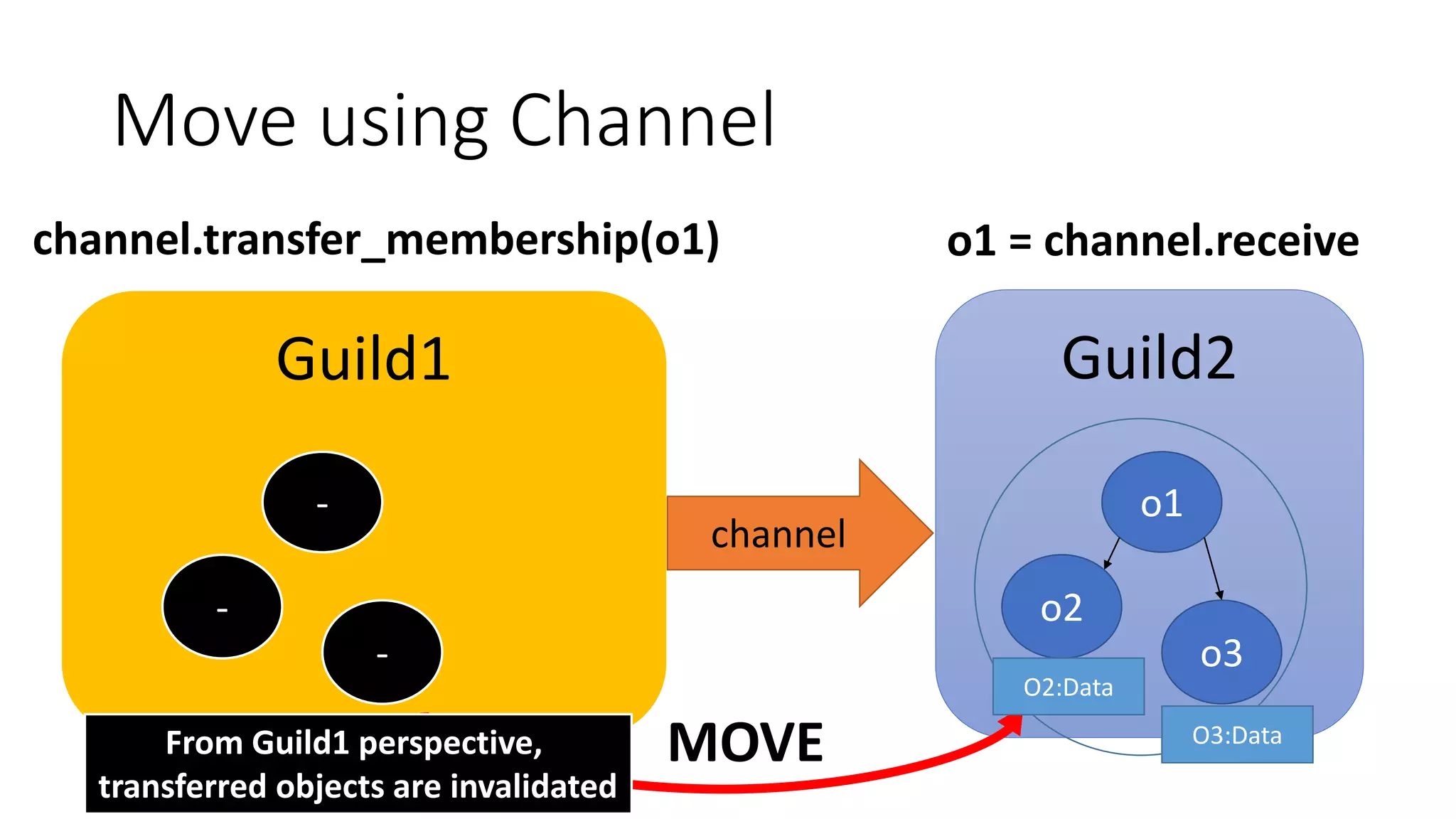
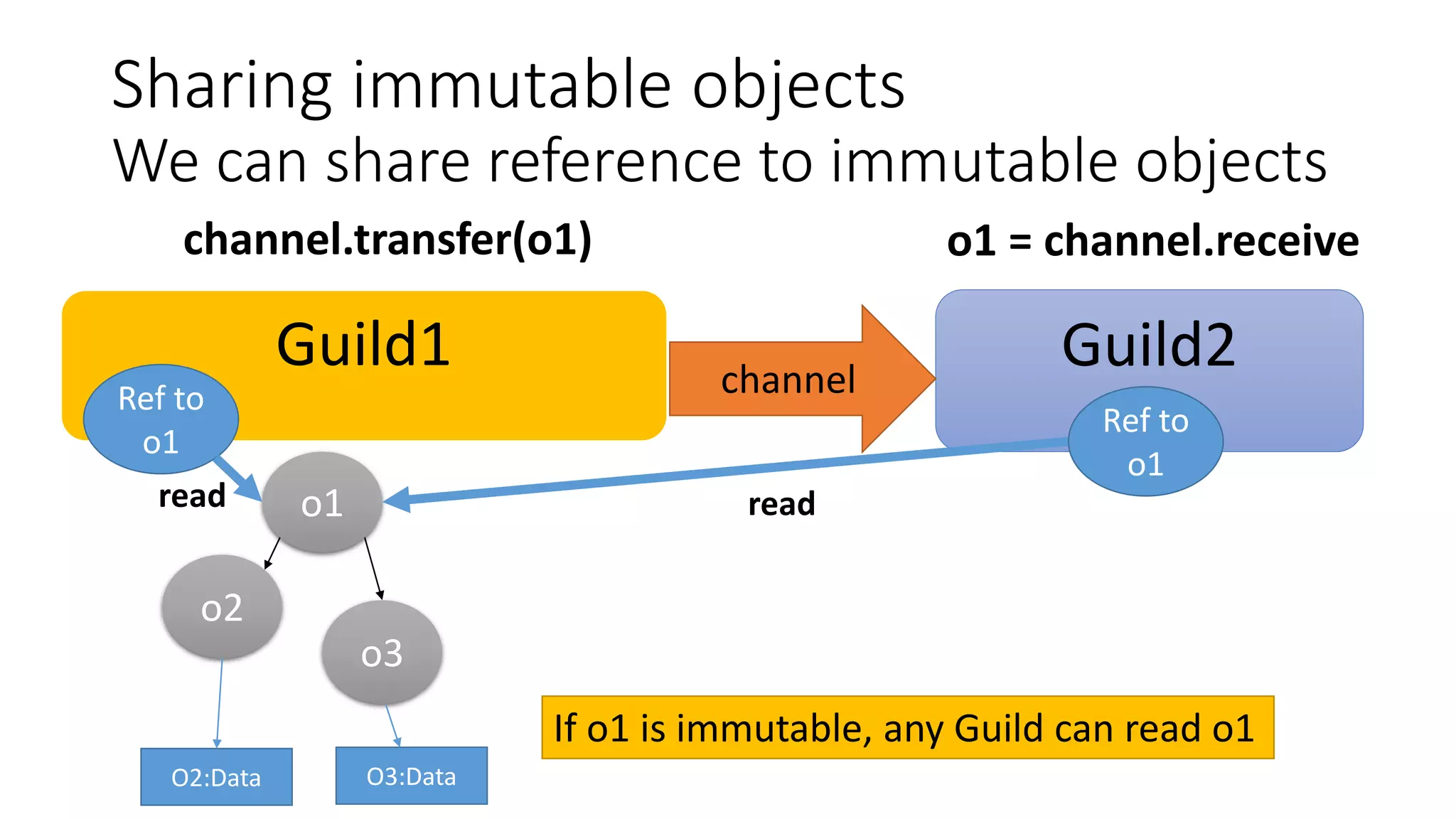
![Use-case 1: master – worker type
def fib(n) ... end
g_fib = Guild.new(script: %q{
ch = Guild.default_channel
while n, return_ch = ch.receive
return_ch.transfer fib(n)
end
})
ch = Guild::Channel.new
g_fib.transfer([3, ch])
p ch.receive
Main
Guild
Fibonacci
Guild
ch
return_ch
n, return_ch
Answer of fib(n)
NOTE: Making other Fibonacci guilds,
you can compute fib(n) in parallel](https://image.slidesharecdn.com/2017rubyconfjakarta-171226022013/75/Ruby-s-Concurrency-Management-Now-and-Future-73-2048.jpg)
![Use-case 2: pipeline
result_ch = Guild::Channel.new
g_pipe3 = Guild.new(script: %q{
while obj = Guild.default_channel.receive
obj = modify_obj3(obj)
Guild.argv[0].transfer_membership(obj)
end
}, argv: [result_ch])
g_pipe2 = Guild.new(script: %q{
while obj = Guild.default_channel.receive
obj = modify_obj2(obj)
Guild.argv[0].transfer_membership(obj)
end
}, argv: [g_pipe3])
g_pipe1 = Guild.new(script: %q{
while obj = Guild.default_channel.receive
obj = modify_obj1(obj)
Guild.argv[0].transfer_membership(obj)
end
}, argv: [g_pipe2])
obj = SomeClass.new
g_pipe1.transfer_membership(obj)
obj = result_ch.receive
Main
Guild
Pipe 1
Guild
obj
Obj’
Move
and modify
Pipe 2
Guild
Obj’’
Move
and modify
Pipe 3
Guild
Obj’’’
Obj’’’
Move
and modify
Move](https://image.slidesharecdn.com/2017rubyconfjakarta-171226022013/75/Ruby-s-Concurrency-Management-Now-and-Future-74-2048.jpg)


